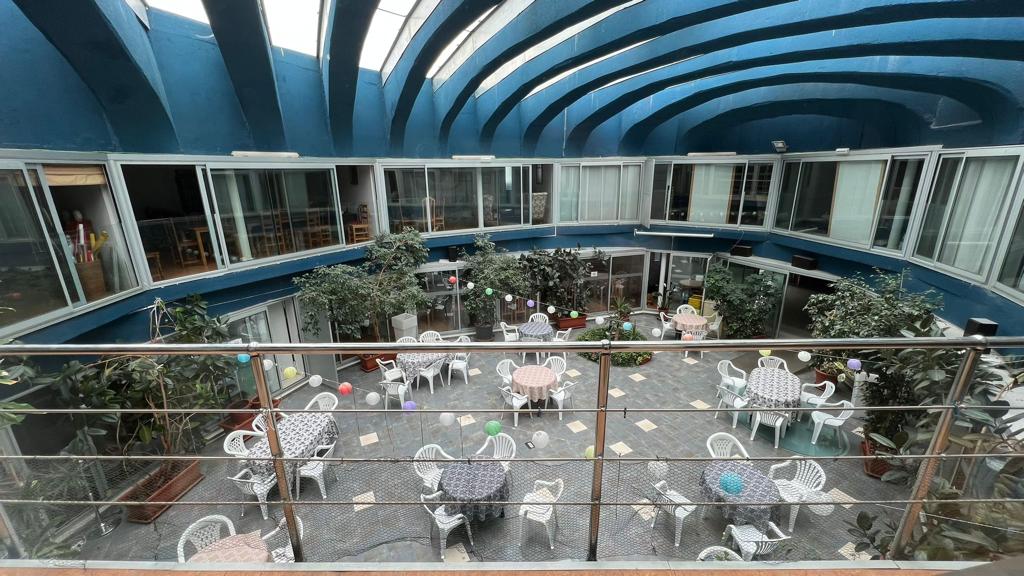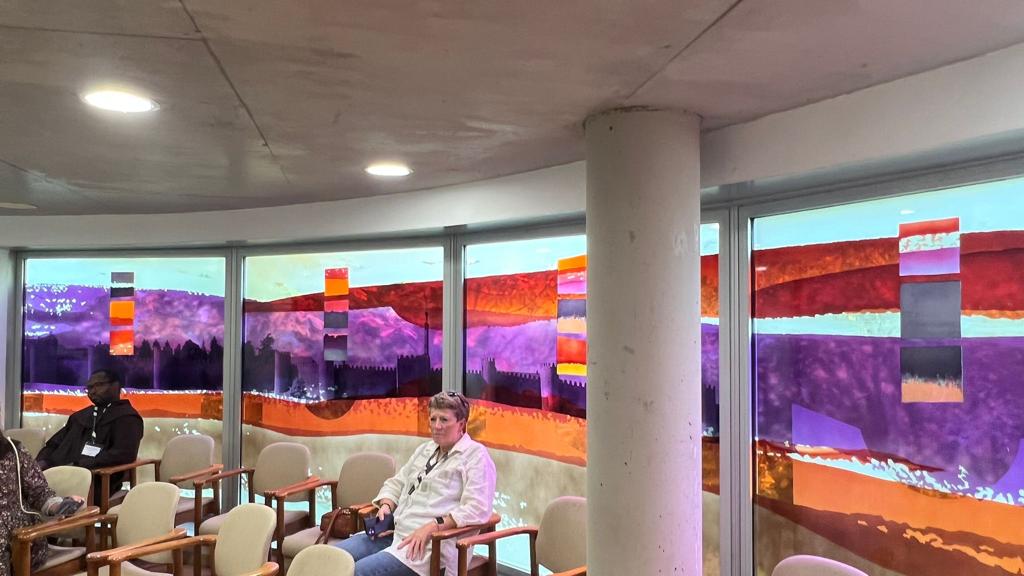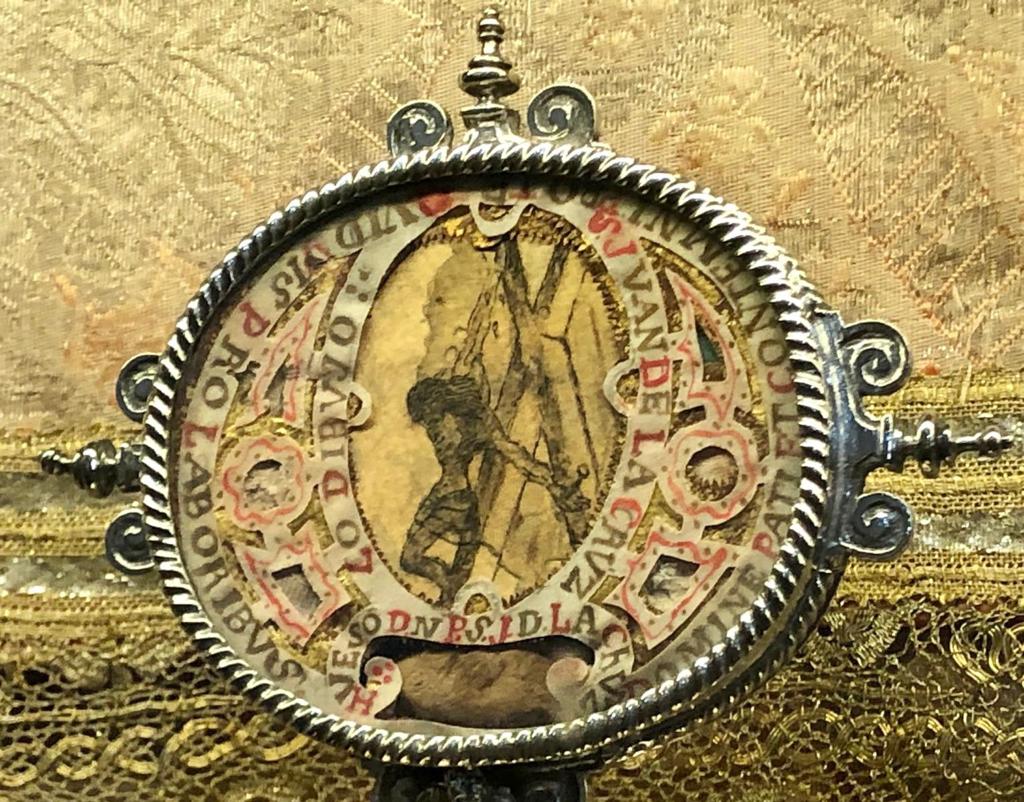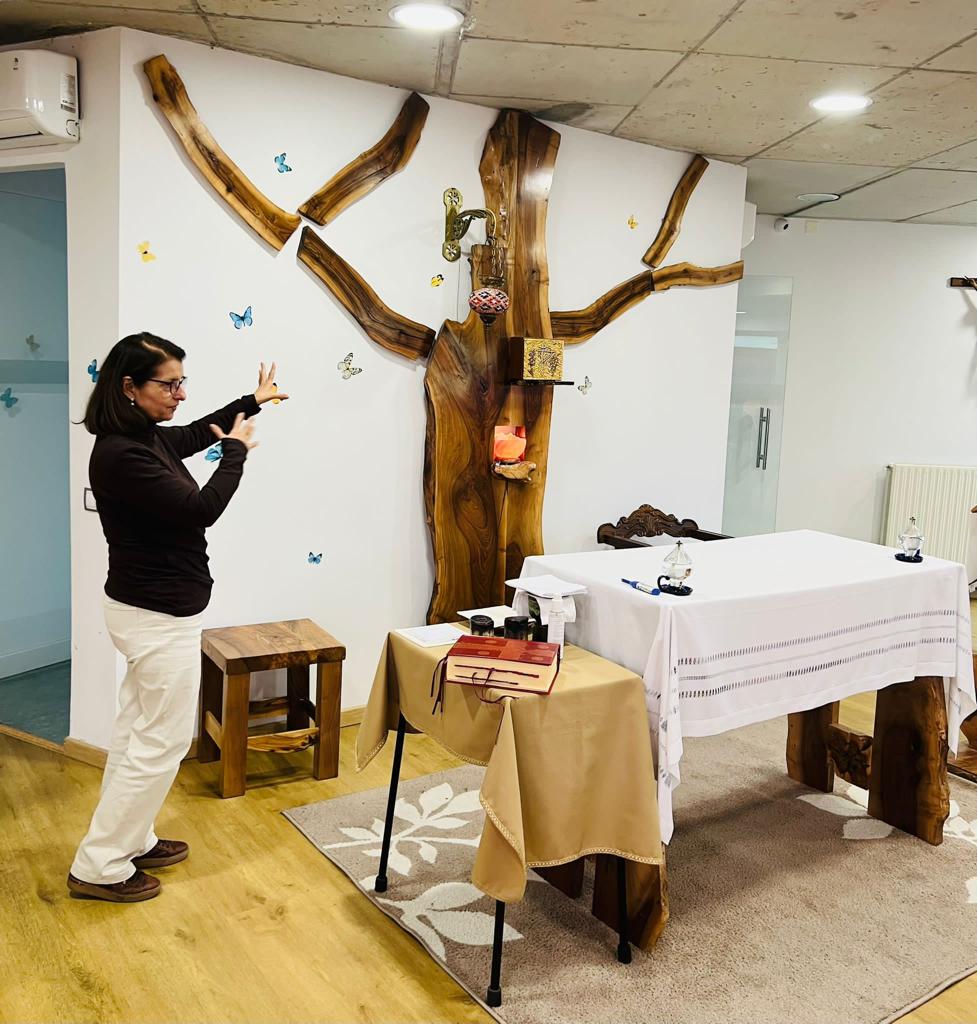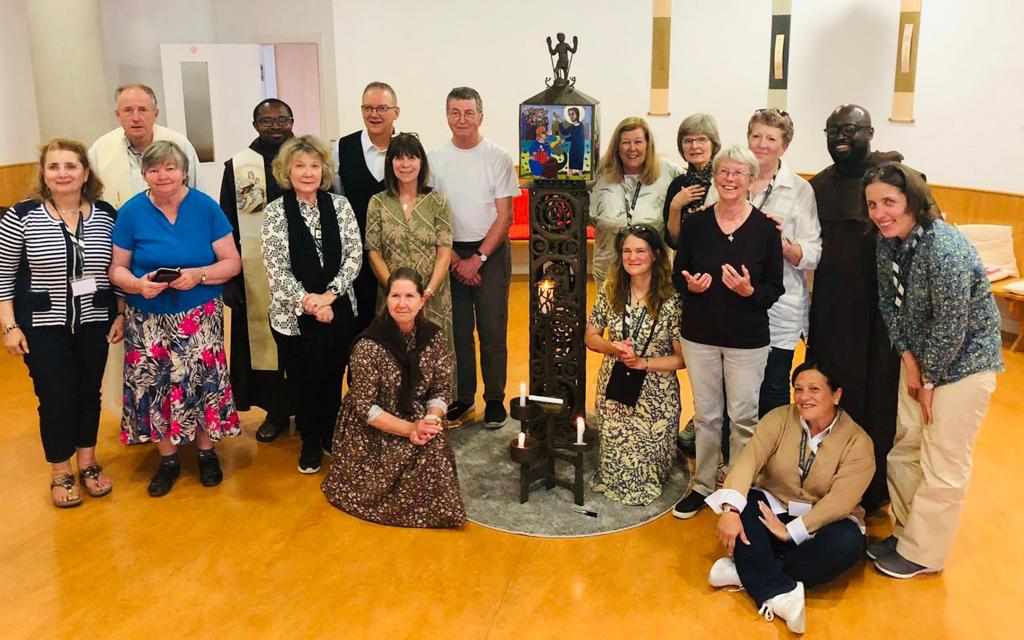Day One – Pilgrims of Love
Our first discovery was the impressive acreage of Madrid Airport. We appeared to cover every square centimetre; partly because baggage collection occurs in a different province, & in terms of levels & terminals our assumed rendezvous was somewhat distant from our driver’s location.
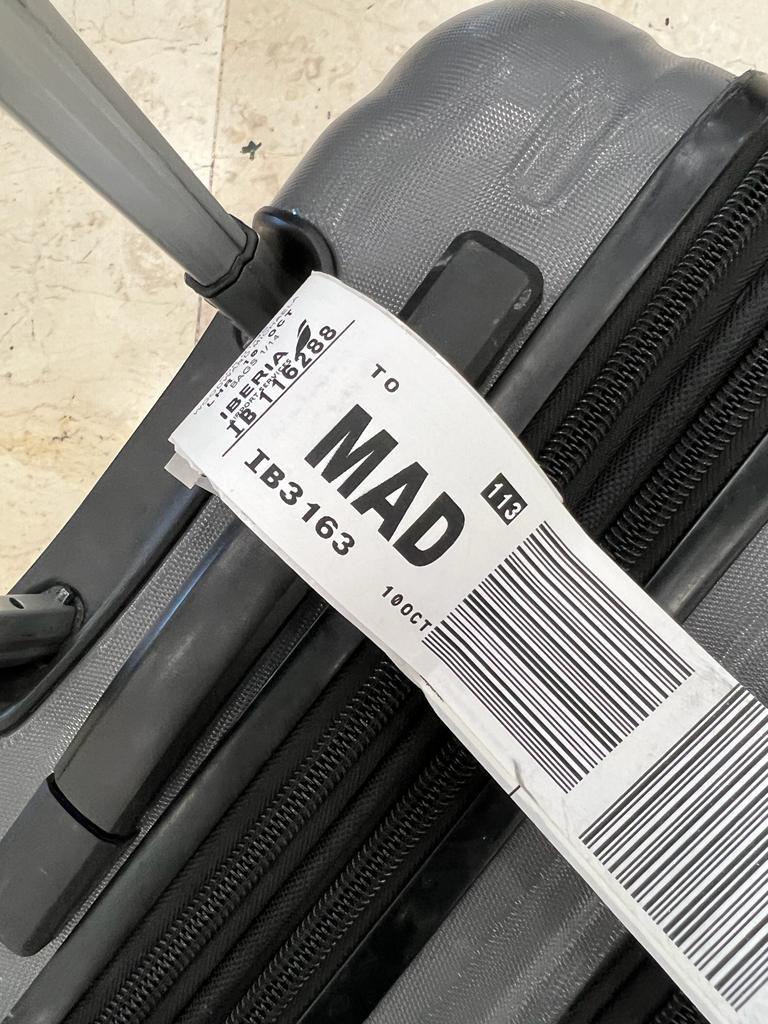
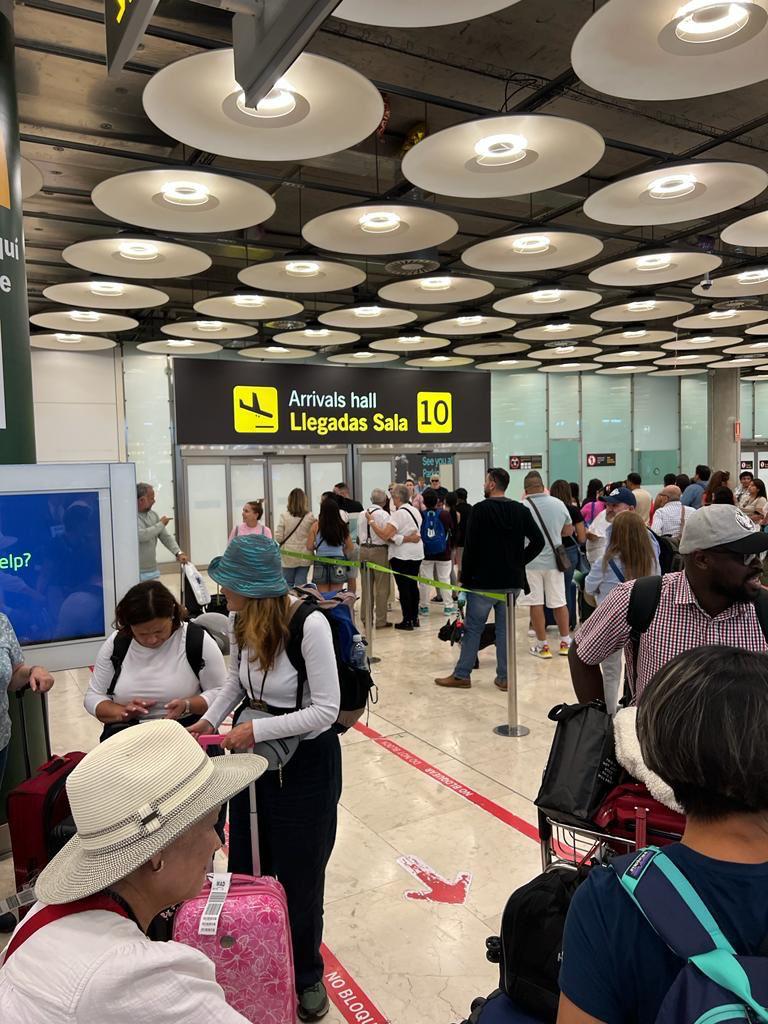
As the early starts were both numerous and deeply felt, much sleeping went on during the journey.
We were slightly perturbed to learn that our intended stay in the monastery had been changed to a hotel, owing to the unexpected loss of their roof.
However the accommodation proved very “pukka” (says Karen) “mint” (says Michael), and the welcome from Alicia on Reception was the equal of any friar (apart from Frs Matt, Kelvin & Yamai, obviously).
The bolder pilgrims were quickly downstairs to find a few hours available to explore Toledo. The seriously daunting hilliness of the old town was tempered by the information that a system of escalators could do most of the work.
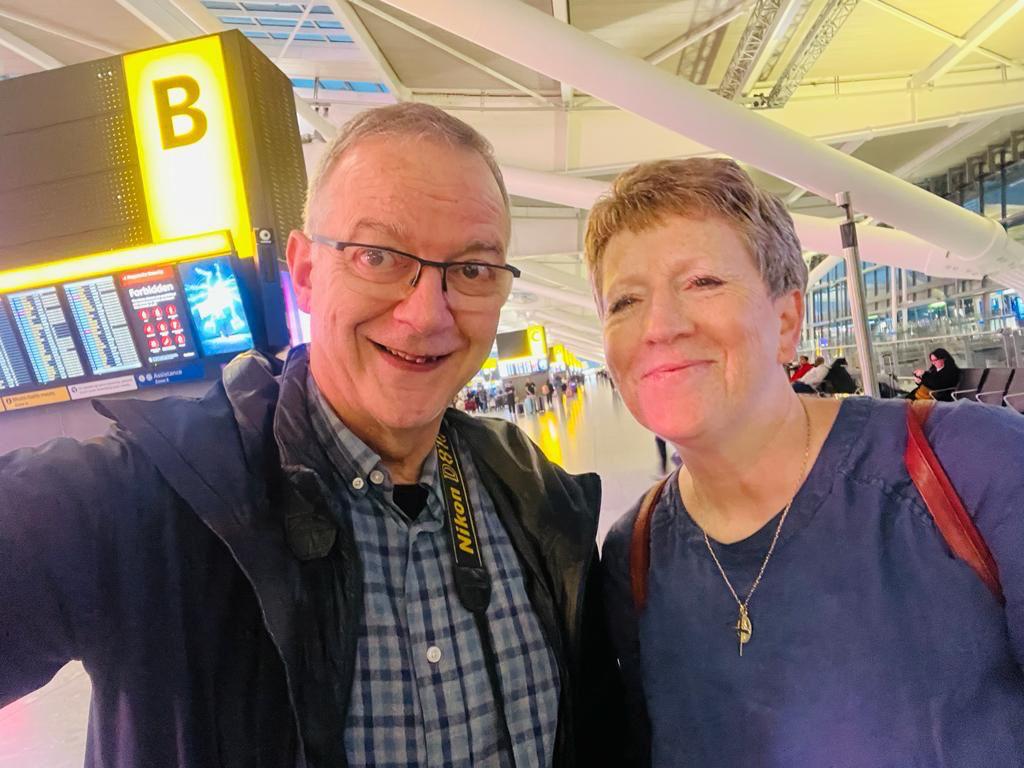
In no time we were in the thick of the twisting streets from the 16th century, walking in the footsteps of our illustrious Carmelite sisters and brothers.
We made for the Cathedral, but had the wrong entrance, and were deflected away to the shops and the opportunity to partake of beverages, as dehydration was a serious problem at this stage.
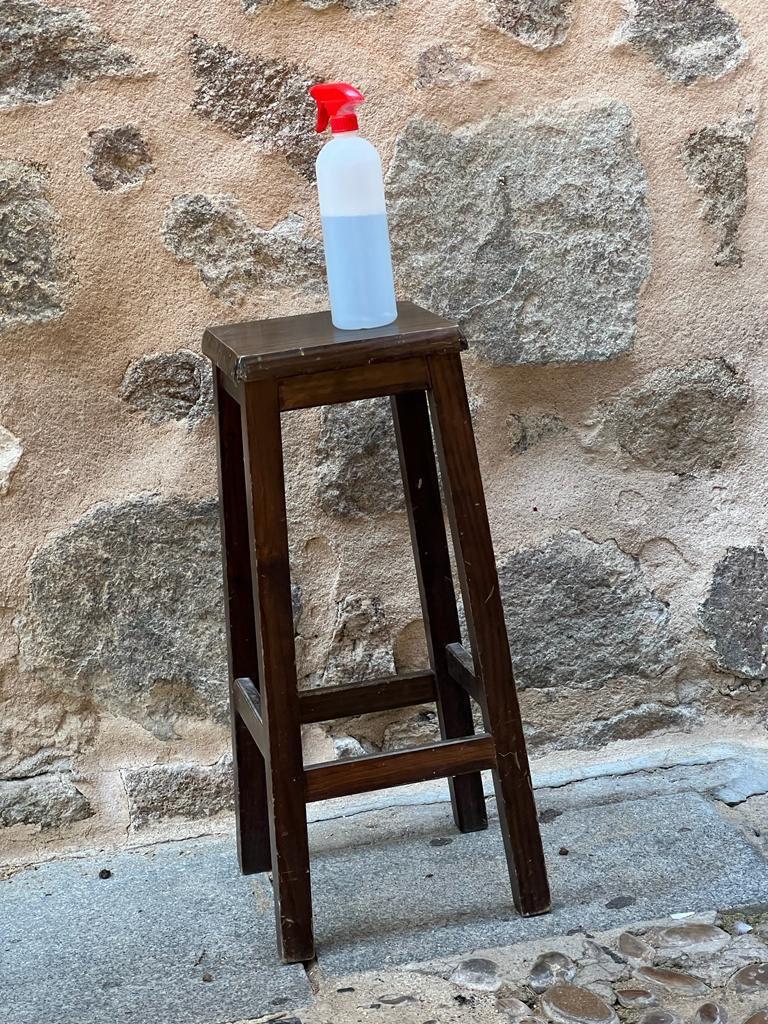
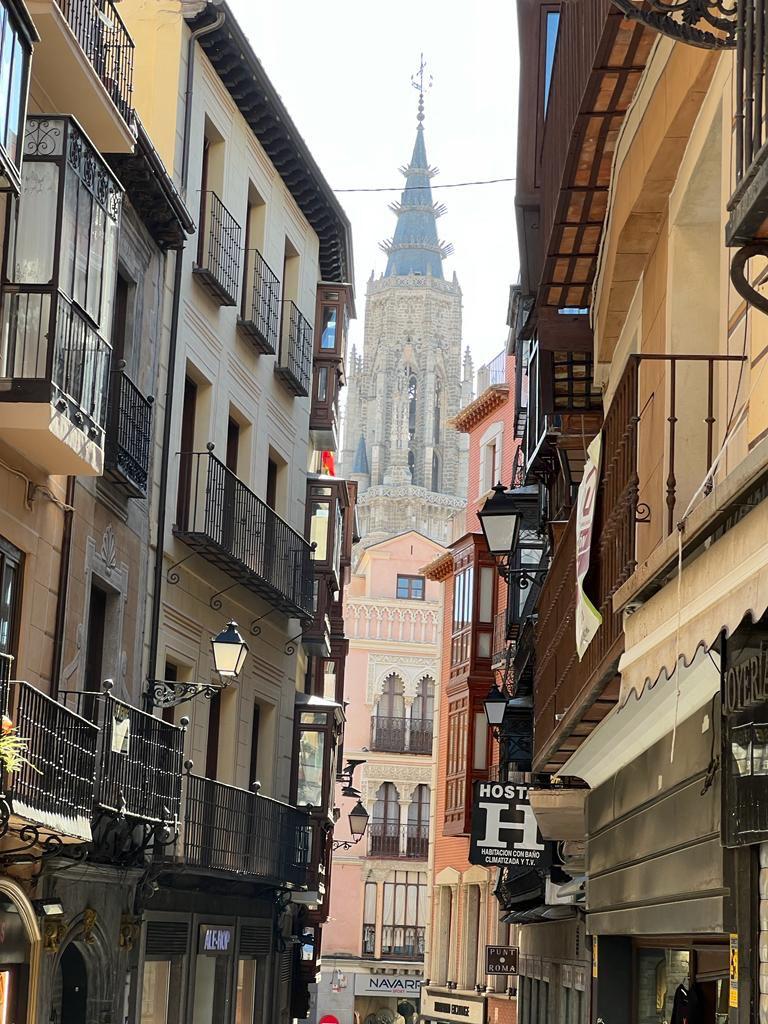
We returned to base, and the lovely surprise of Fr Matt celebrating the Eucharist for us together, and stressing this was the way Teresa sealed the inauguration of her communities.
As we weren’t eating until midnight (only a slight exaggeration!) we were then dazzled by Fr Matt’s effortless exposition of both Teresa’s beginnings as a writer, and the importance of Toledo for her community life and the distribution of her letters. John’s imprisonment and escape was also previewed for our excursions tomorrow.
Much sleeping ensued…
Day Two – The Ways of Gentleness and Love
We breakfasted abundantly with many varieties of pastry, and cooked and cured pork & chorizo. Not to mention the eggs. Such volume took the edge off the logistical nightmare of 2 large parties attempting concurrent use of a single coffee (and tea) dispenser. With the sustenance on board we were ready to tackle the Mount Carmel experience of ascending the heights of Toledo.
The escalators came in very handy; if not specifically mentioned in John’s writings he would no doubt have been impressed at the time and energy saved for writing and contemplation. For us it meant that we could get through a fearsome step count for the day without flaking out before the night supper at 9pm.
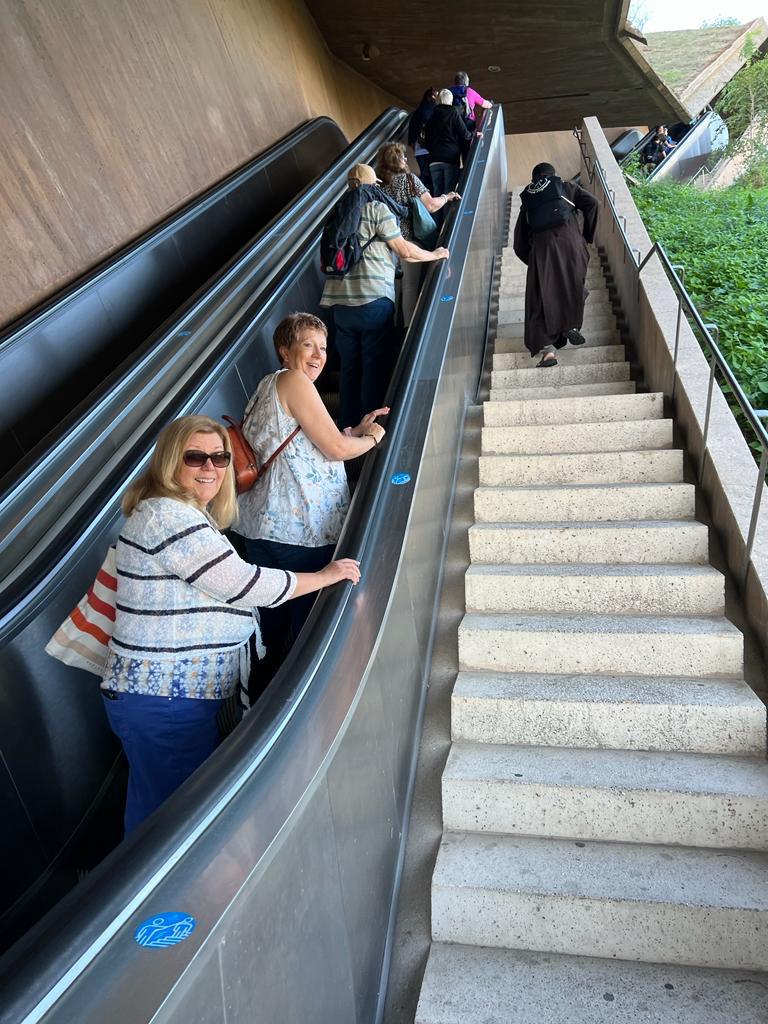
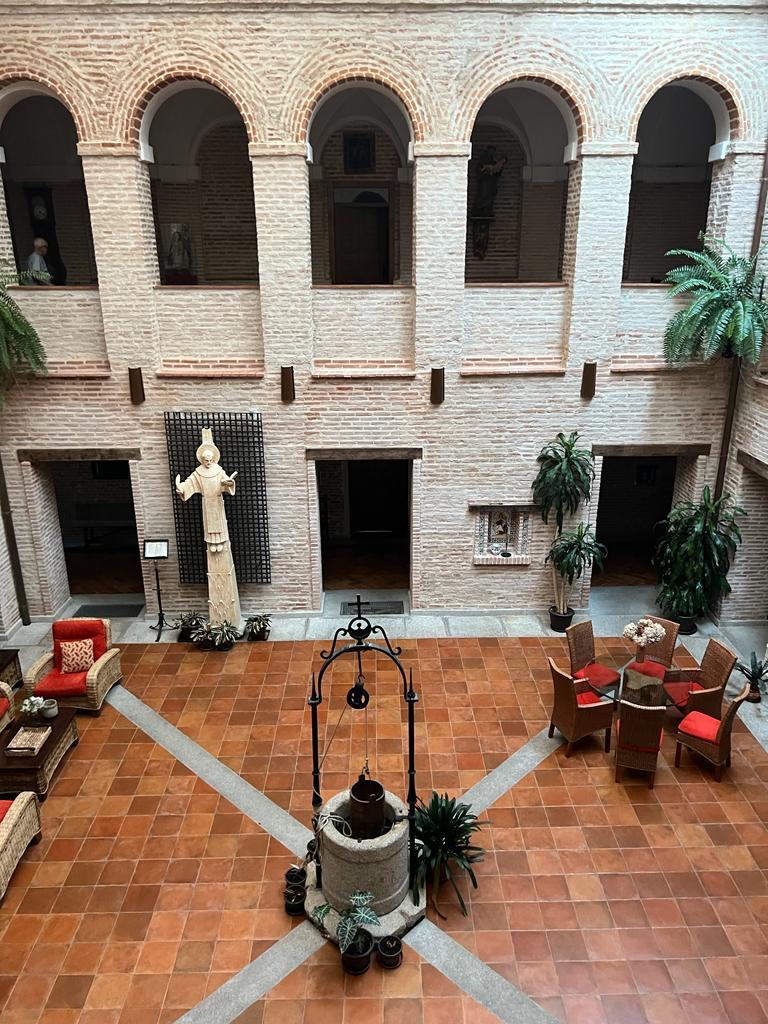
First we visited the Carmelite sisters at St Joseph’s who look after Audrey’s favourite sculpture of Madre Teresa, for our Eucharist. Fr Kelvin shared with us the beauty and dignity we each have in God..he invited us to write our own story…Teresa inscribed her own story here in Toledo. We too are invited to write our own ‘book’ it maybe not a physical book but a spiritual one forged through our lives.
God is restless; God is knocking on the door of our hearts.
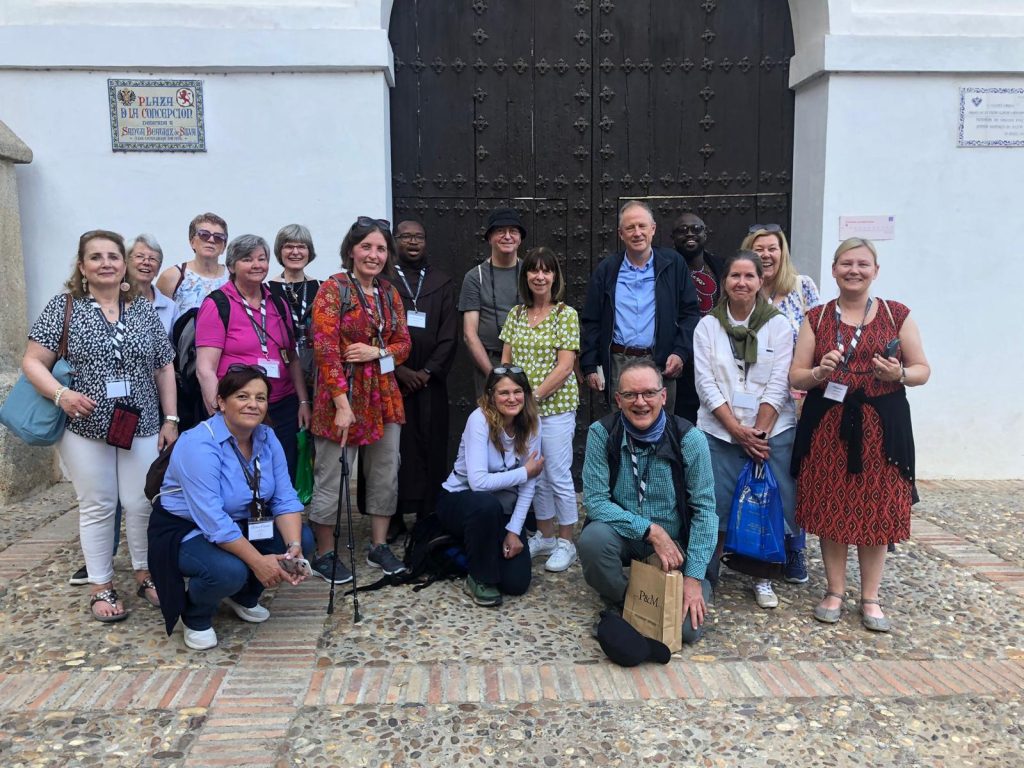
After the visit, those interested were led on an orientation walk by Fr Matt through the ancient Jewish quarter, past the Synagogue Museum and on to the Cathedral plaza, people peeling off to explore different watering holes and a lovely small church that remains open for perpetual Adoration.
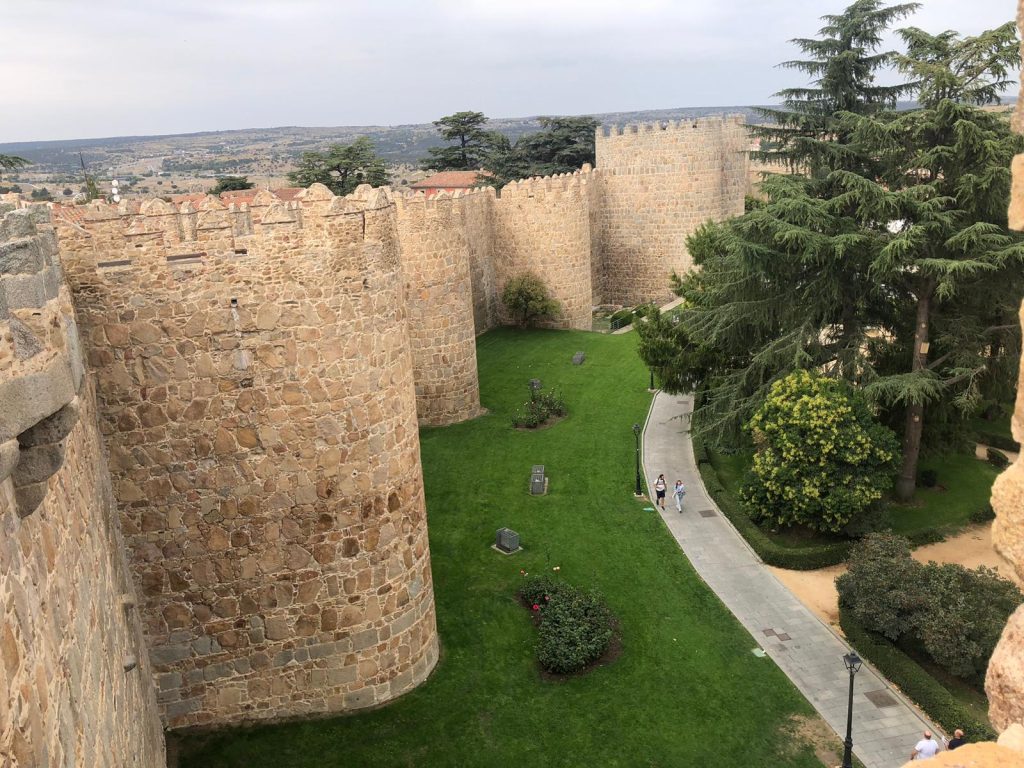
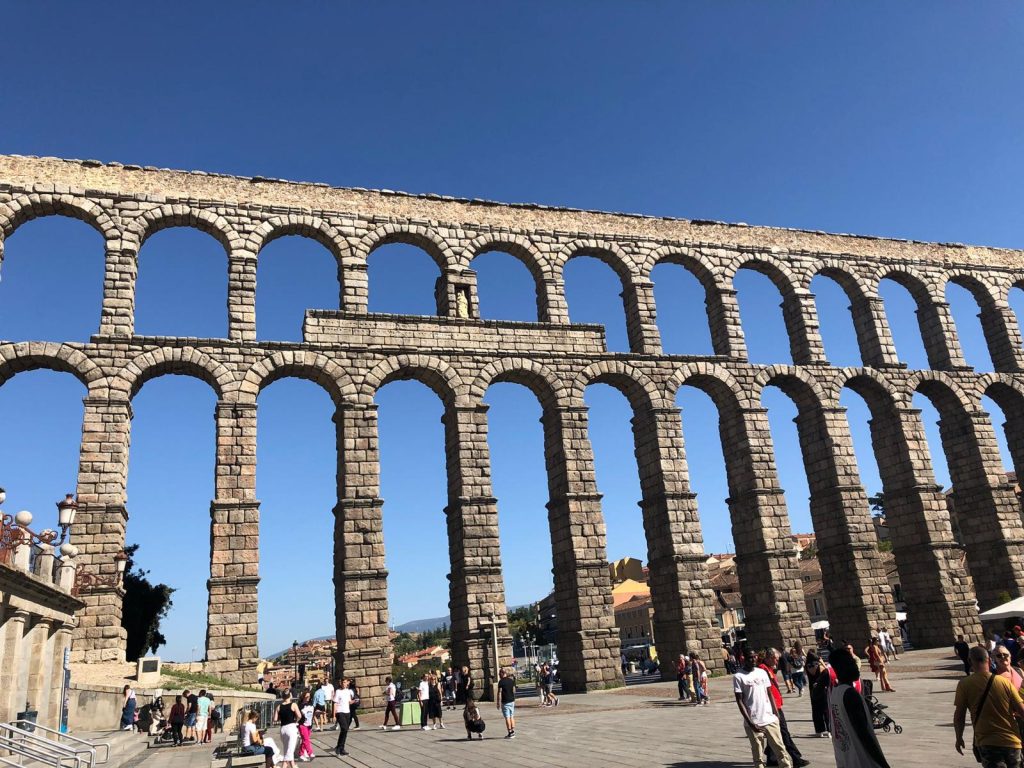
An unexpected bonus proved to be the El Greco house and museum. It is a sanctuary of peace and quiet in a bustling town, with traffic apparently eager to skittle distracted tourists, with El Greco’s striking works presented in imaginative ways.
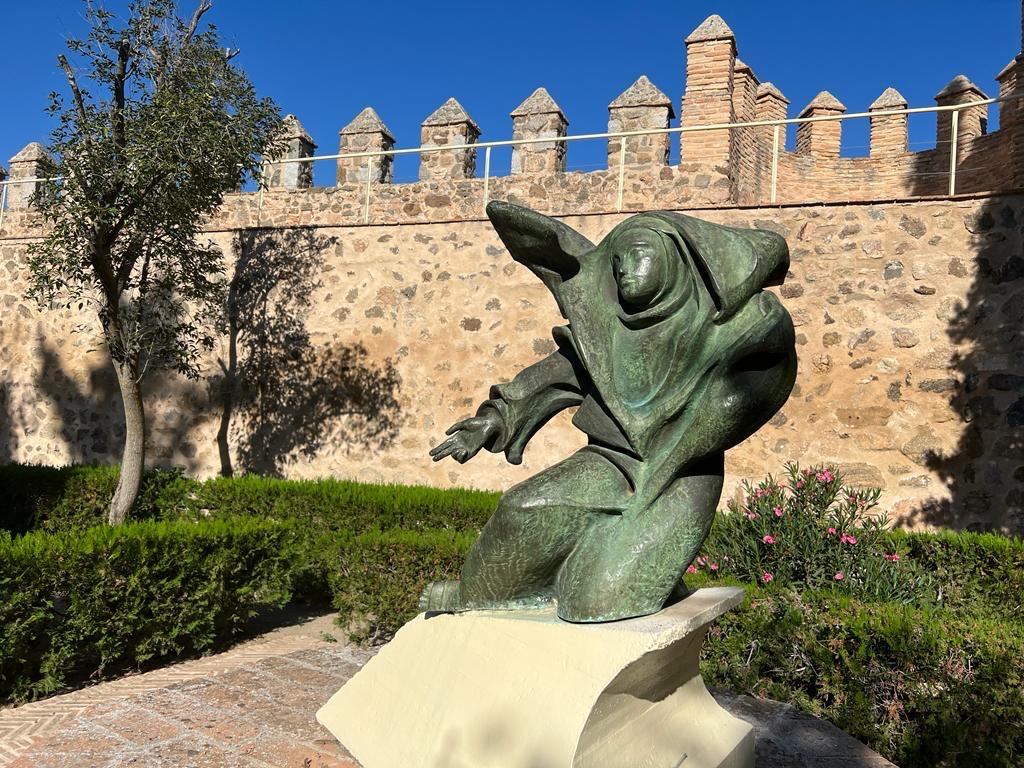
Our evening session began by meeting up with Fr Matt, who had managed a brief respite from the pilgrims’ enthusiastic questions. We sense the importance of keeping him in tiptop condition, as it’s only Wednesday.
There followed an extraordinary walkthrough of St John’s escape from imprisonment, taking in the still existing convent community whose garden he climbed into, and a pause on the river bridge to observe the window in the actual building he escaped from. John underestimated the height of the drop, and we could see it needed a miracle to get him safely from the descent onto the riverside and into the garden.
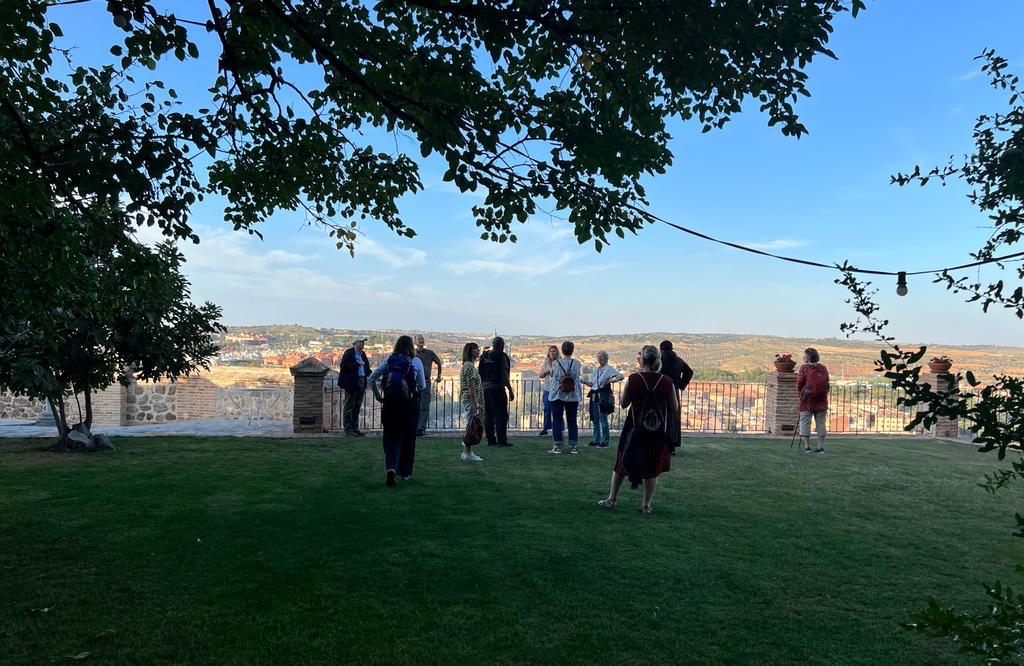
He then had to find Teresa’s discalced sisters who alone would offer him refuge. Fr Matt showed us their original monastery, and the hospital run by their patron who could look after John, and help him recuperate.
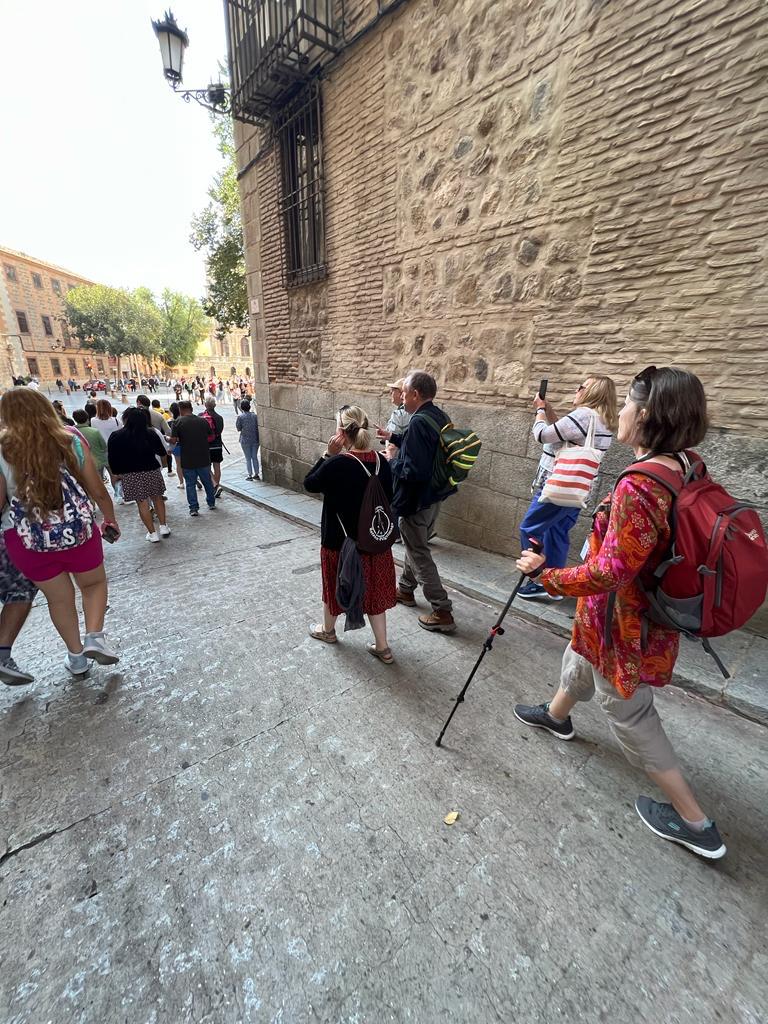
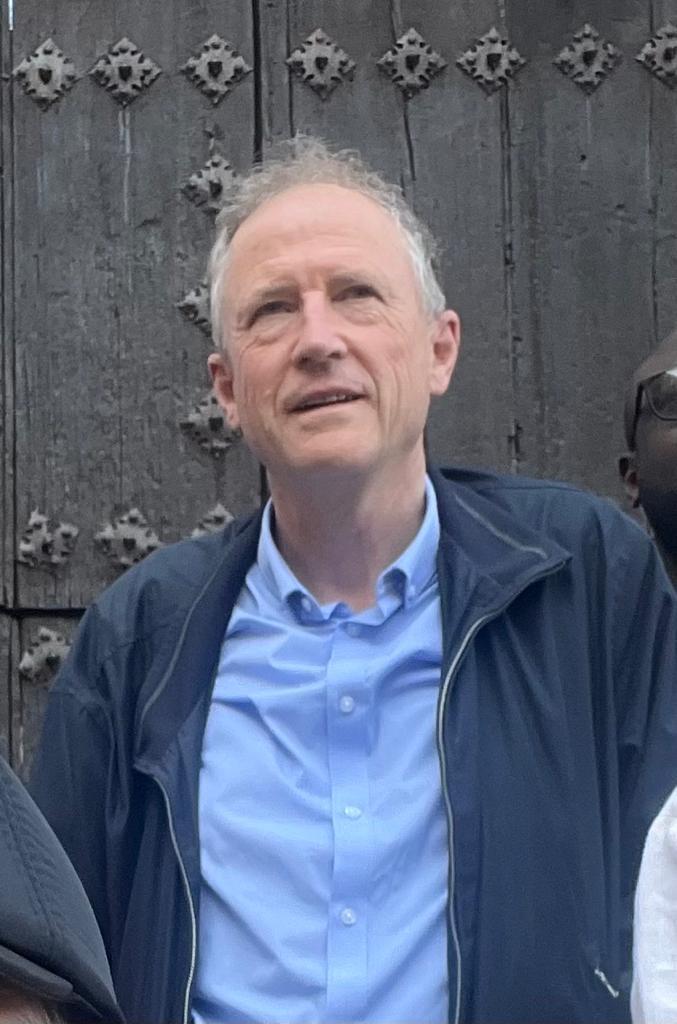
We finished at the current Friary, where we would have stayed if they hadn’t recently parted company with their roof. We remembered their very contemporary 17 martyrs, and enjoyed a wonderful wander through their chapel and grounds, complete with a stunning view and pomegranates.
Eventually arriving home, we felt very ready for supper and a certain amount of wine, which remains confidential.
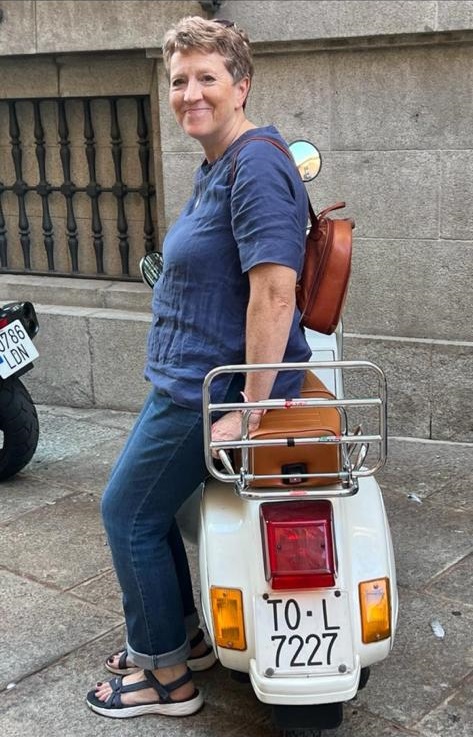
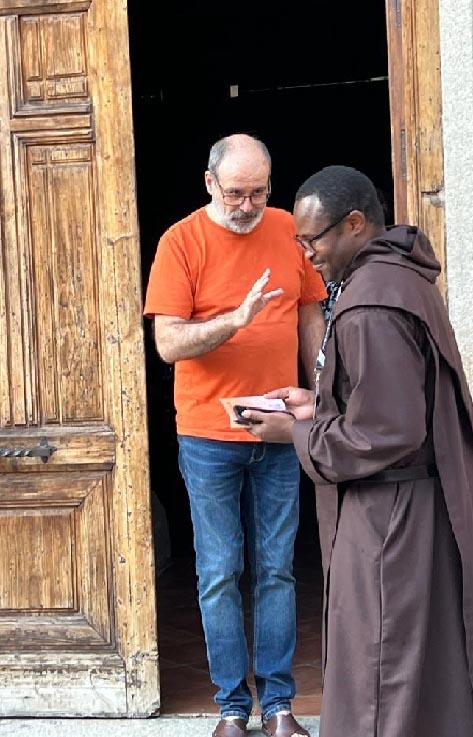
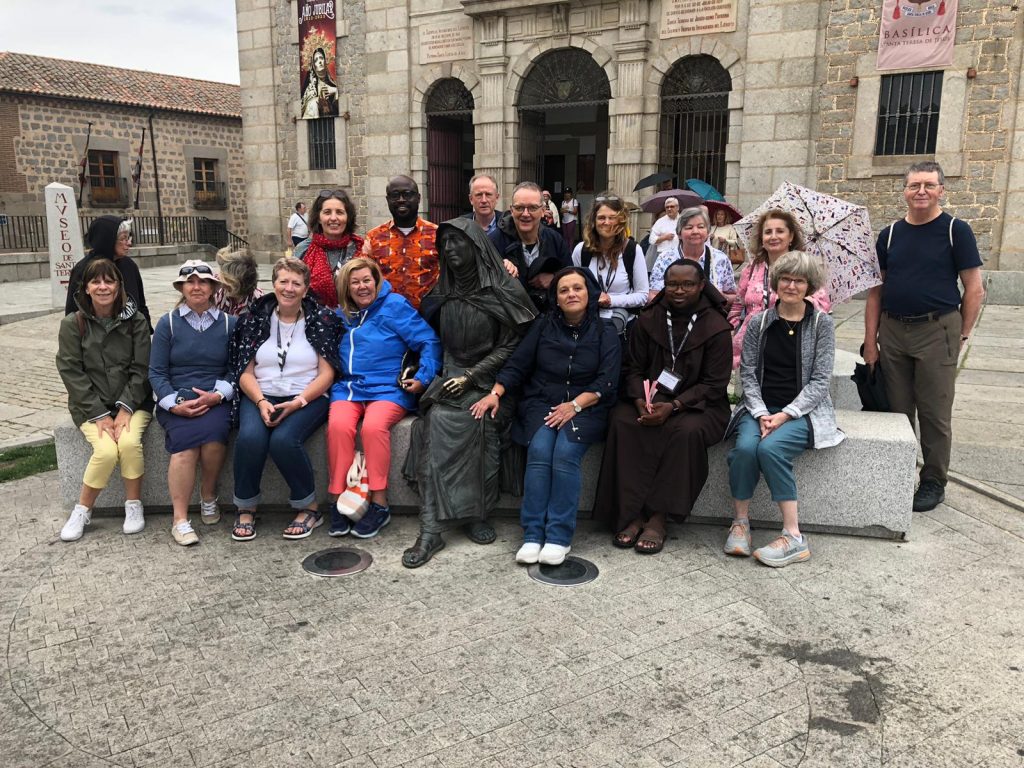
Day Three – My House shall be called a house of prayer
Having got John of the Cross out of ‘clink’ yesterday, we were ready for more of his story from Fr Matt on the way to his final resting place of Segovia. The twin emblems of Segovia, renowned internationally, are the Roman acqueduct and the fairytale castle that Walt Disney was so taken with he stole it for his company trademark. It is an impressive presence over the town, but our interest was in fishing for a more important friar.
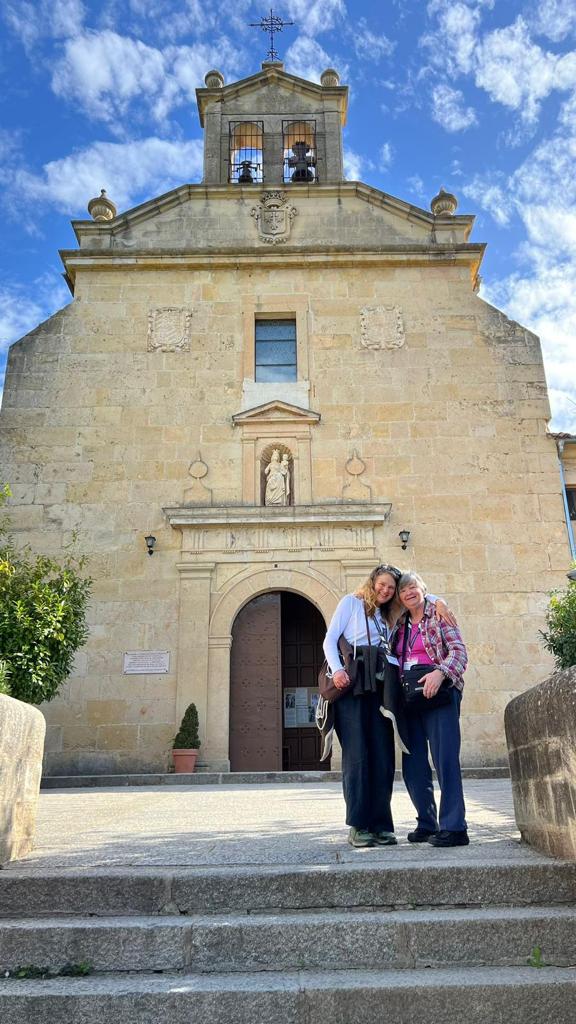
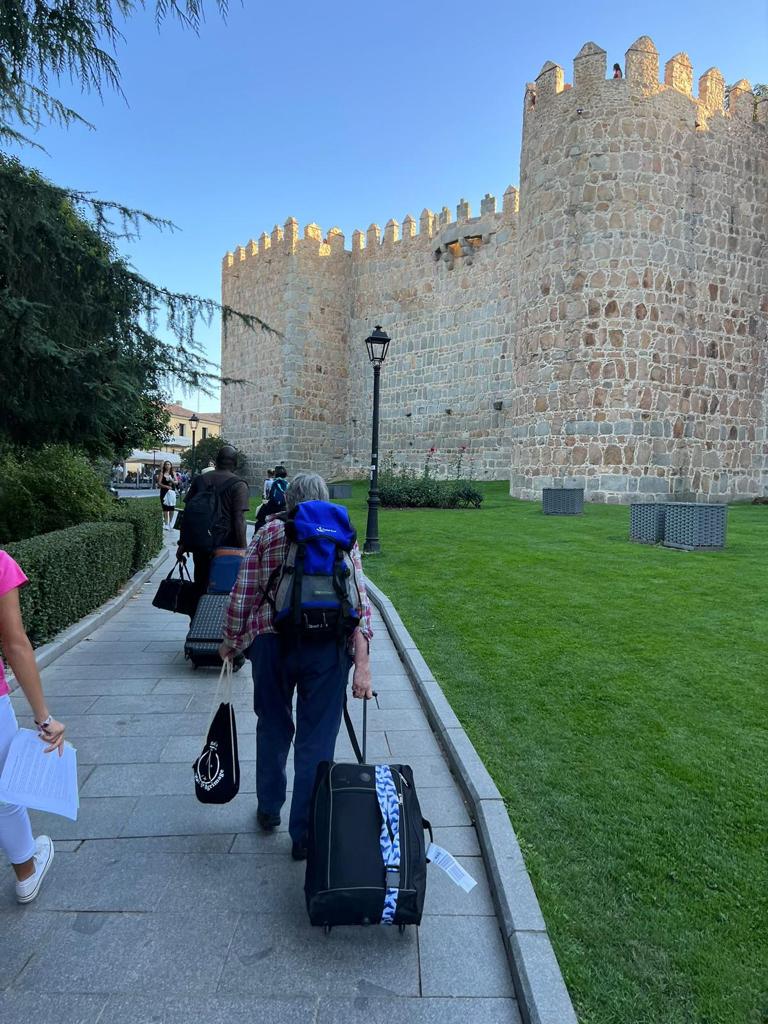
The discalced friars chose a quiet spot at the base of the town’s long thin ridge. The basilica today stands among a beautiful grove of trees, with John’s much loved garden that we weren’t able to see. The main church had a striking 1960s mural across the sanctuary symbolising John’s three major poems, with the tabernacle nestling in the blue ocean of the Spiritual Canticle.
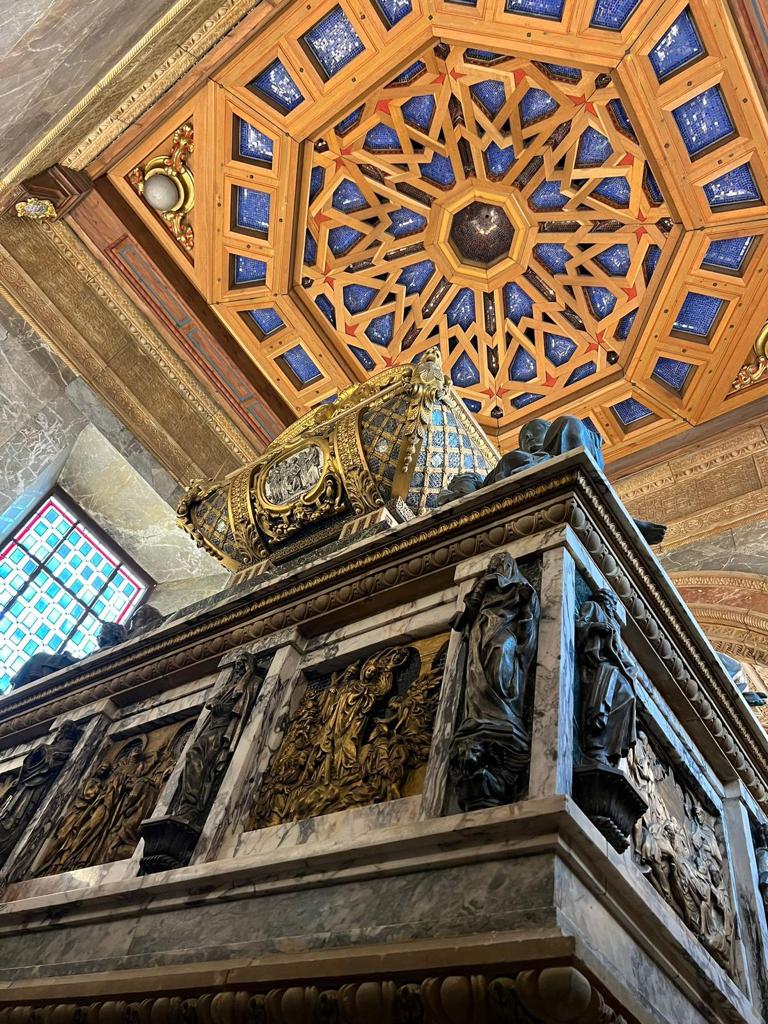
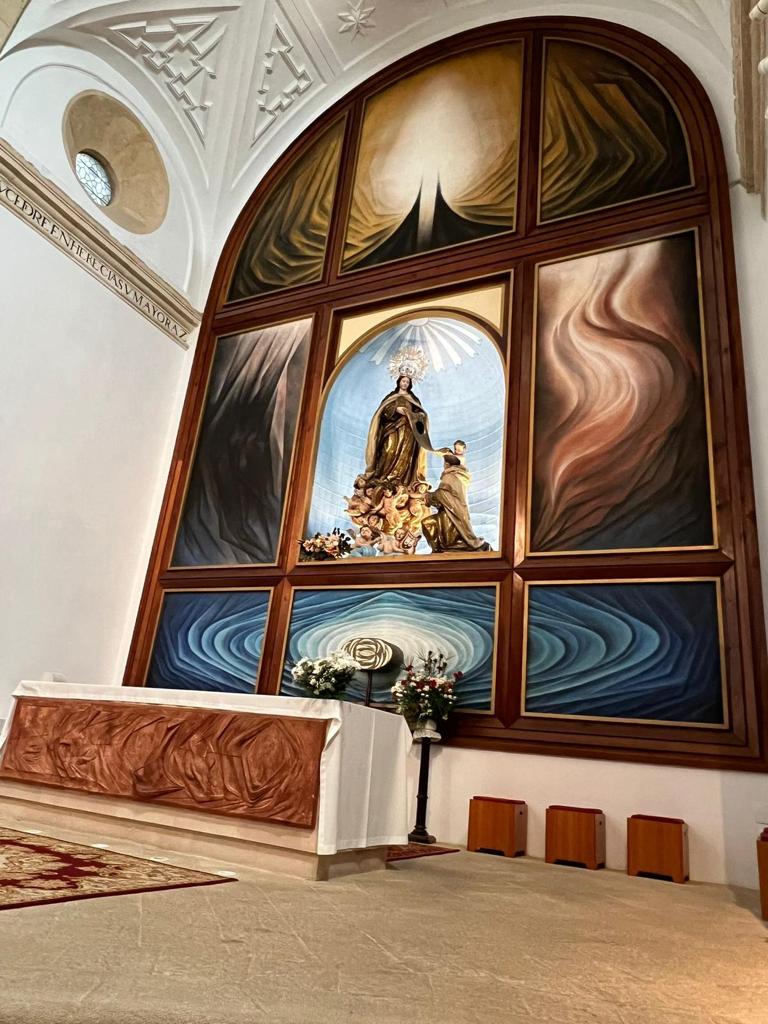
We had our slot for mass in the side chapel with the tomb of St John prominent on its lofty platform. The elaborate casket is set within an inner chamber that is profusely – gorgeously – decorated with the familiar Carmelite saints and symbols. As impressive, just inside the larger chapel, was John’s original resting place — just an empty stone-lined grave. At his canonisation John’s body was disinterred (and found to be incorrupt) before it was transferred to its final resting place. Fr Yamai spoke eloquently, weaving the mass readings into John’s teaching, and inviting us to relinquish all that is not of God.
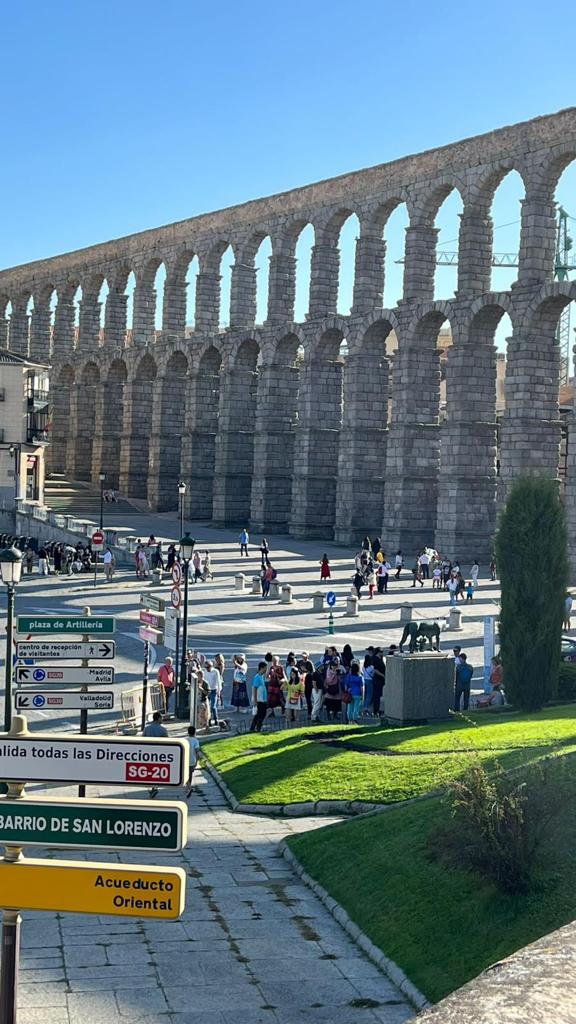
From this centre on the margin, Fr Matt led a perfectly distanced crocodile along winding streets, across a scenic bridge and up a steep hill towards uptown Segovia, where the drivers take no prisoners. We were able to see where John came to minister to the community of Carmelite nuns. Those of us not up to crocodialing had bus-assisted transport to the city centre.
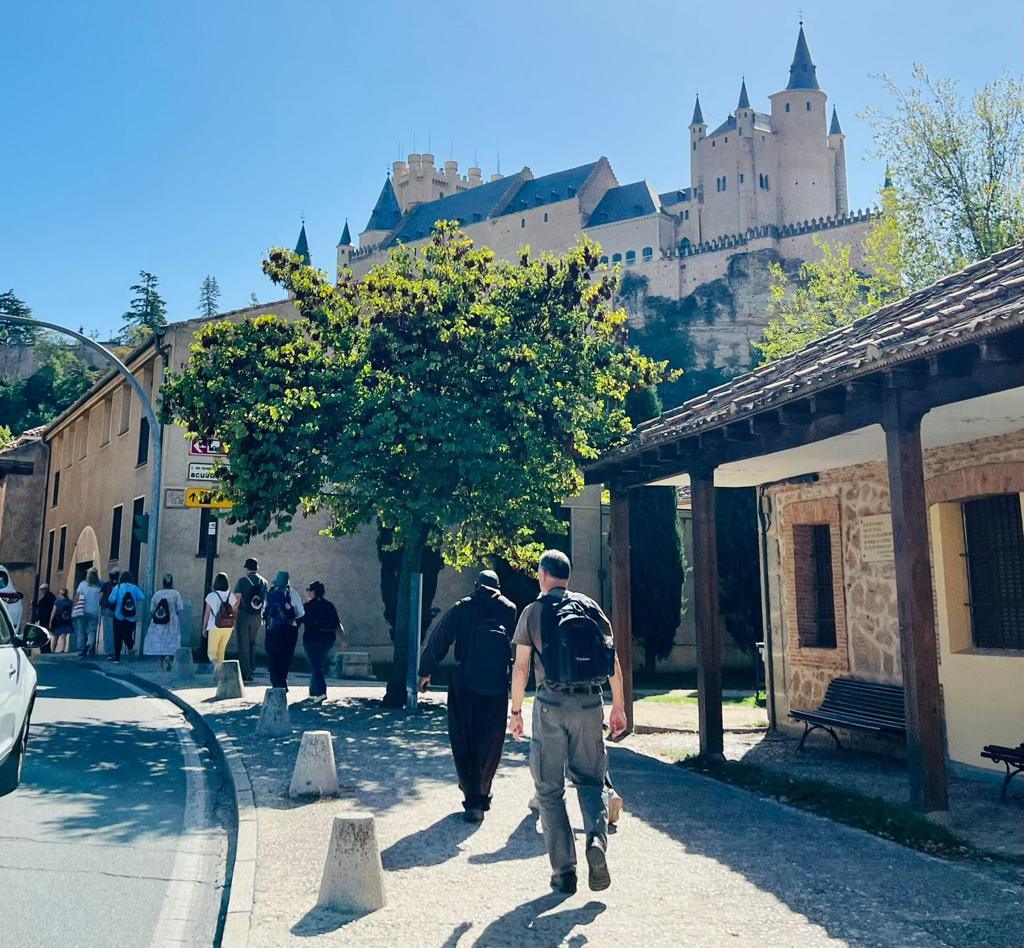
To be honest, modern Segovia had its disappointments. Fr Kelvin had built up the local suckling pig as the delicacy of the century, but was unable to produce any, due to the local fiesta. An even bigger loss was the total shuttered lockdown of every church in the city other than the rather expensive Cathedral. Centuries of history & galleries of art and artefacts were imprisoned behind doors that gave no hint of any opening hours or access on any days. This did leave room for an extended lunch and time to visit the Synagogue and the long thin streets of Segovia leading to the magnificent acqueduct, where we met our bus.
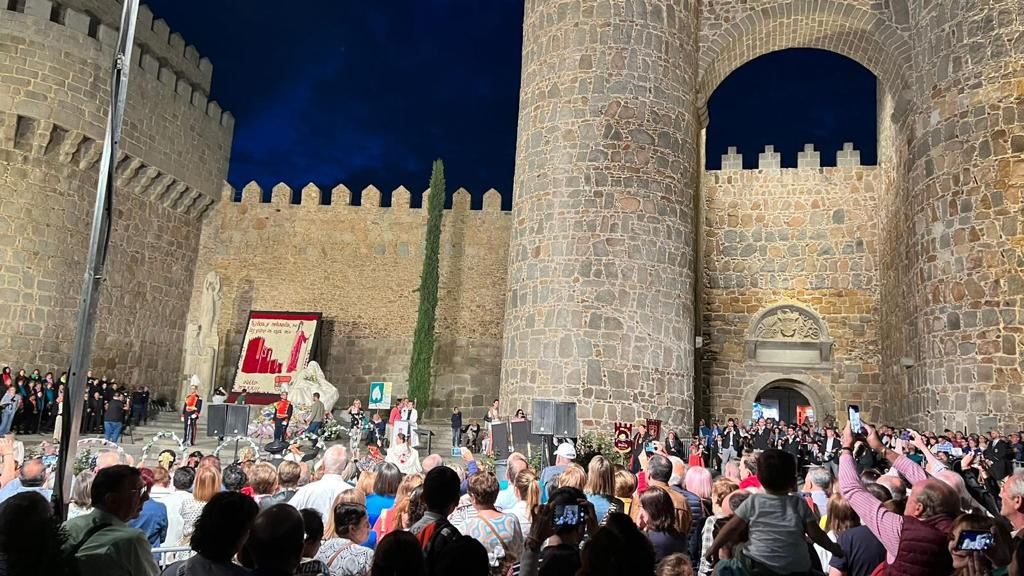
Disembarkation under the walls of Avila revealed the need to gain altitude quickly, which was not facilitated by a shortage of working escalators. Fr Kelvin initiated us into the ancient Avilian custom of dragging your wheeled suitcases around the city walls seven times. We only managed one and a half times before collapsing into our hotel. The lack of a lift brought out our pilgrim spirit and baggage was delivered where it needed to be. Our fears of being stripped of mealtime wine, as well as elevators, in our new surroundings were thankfully not borne out, and it certainly helped us survive the raucous street music that continued far into the dark night.
Day Four – The Virtue of Determined Determination
We felt very snug waking up by one of the main gates into Avila. Some pilgrims explored the streets before sunrise, running into St John on a plinth, followed by Madre Teresa seated outside the church of her family home, of which more later. This meeting was accompanied with fabulous birdsong from the monastery enclosure to mark the sunrise.
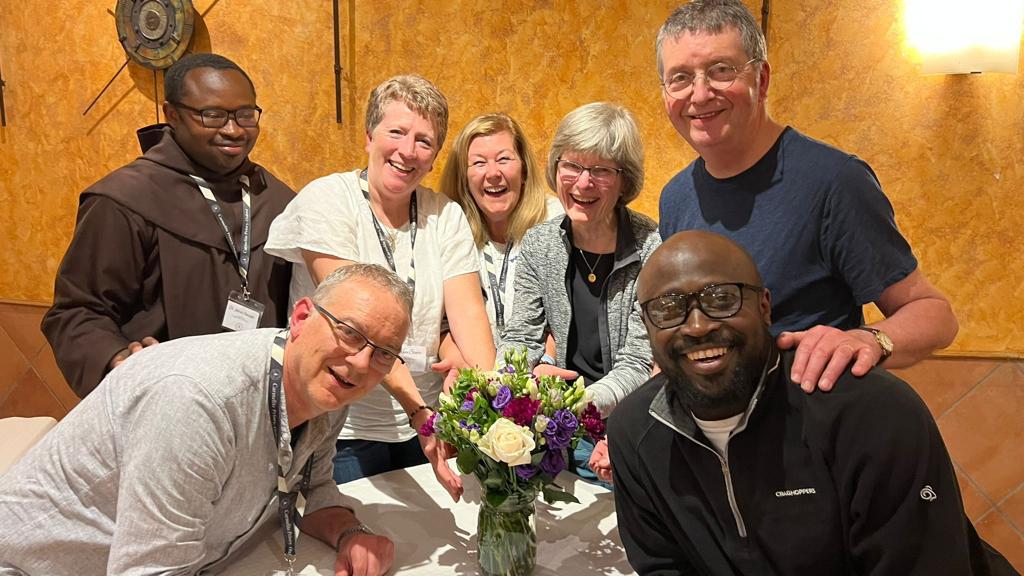
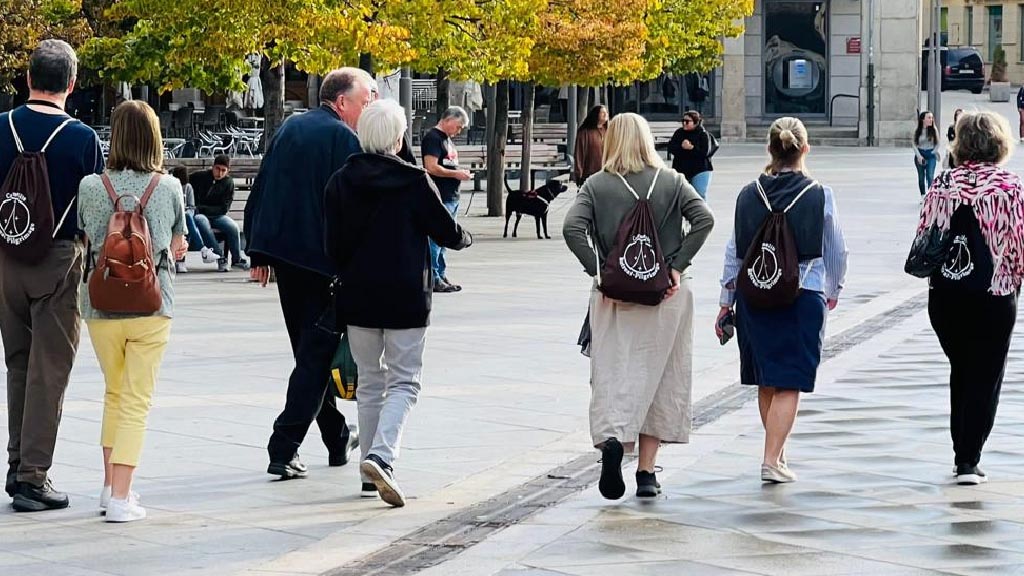
We were soon on our way to San Jose monastery, where bell ringing is compulsory when pilgrims arrive to celebrate a mass. Fr Matt presided at our eucharist explaining how St Teresa’s first foundation was complicated by the benefactor Francisco being both bankrupt and not of noble birth. Teresa nevertheless insisted his request to be buried in the church was honoured, and she became the Prioress to ensure financial stability. We made a serious contribution to its current financial situation by stripping the monastery shop nearly bare.
An optional visit was made to St Thomas’s down the hill where crampons would have proved useful. It is now a Dominican church with the ornate tomb of the benefactor behind the altar.
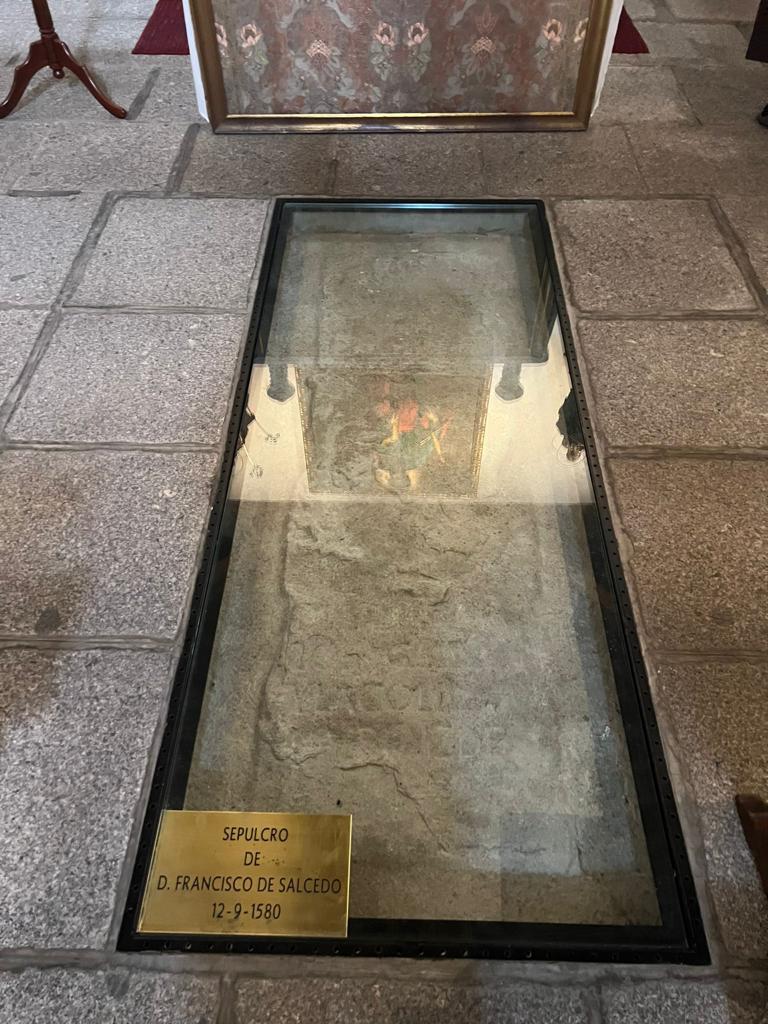
During some brief downtime the more adventurous ascended the famous walls of Avila, enjoying the views from the 2 km track between the turrets. Karen sang the psalm 48 about ramparts several times.
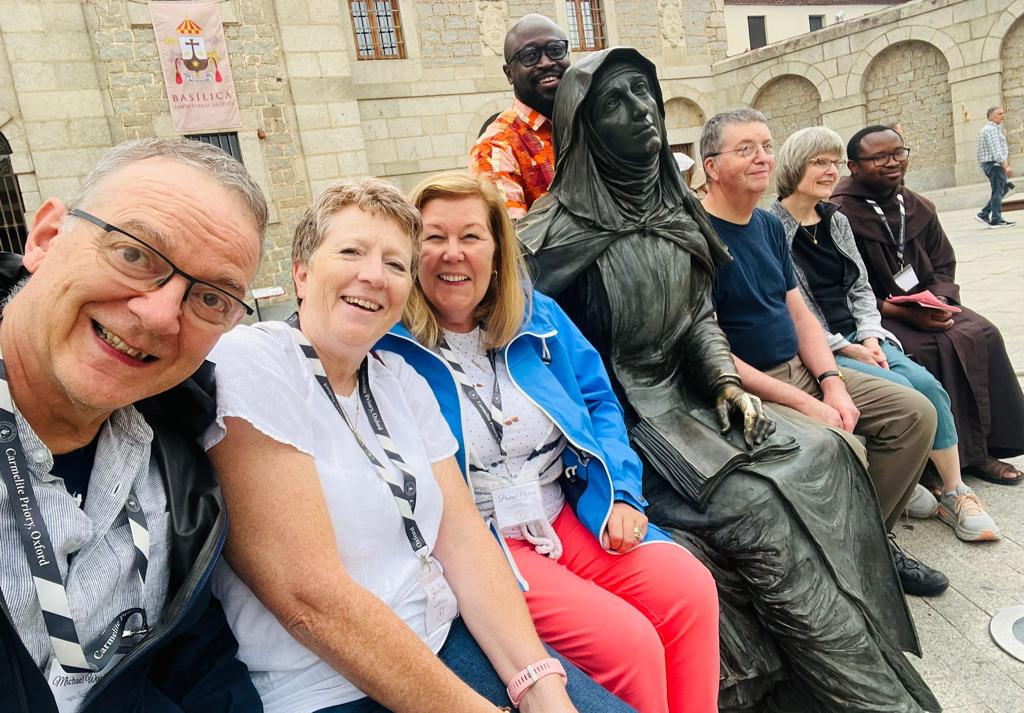
We were happy to complete the hat trick of churches for the day with a momentous visit to La Santa, the monastery on the site of Teresa’s birthplace. We nearly stayed in their guesthouse, but Carmelite booking practices turned this ambition into the thicket of a near miss. The museum was impressive, with all kinds of exhibits that left us reeling and ready to brave the elements as the rain fell.
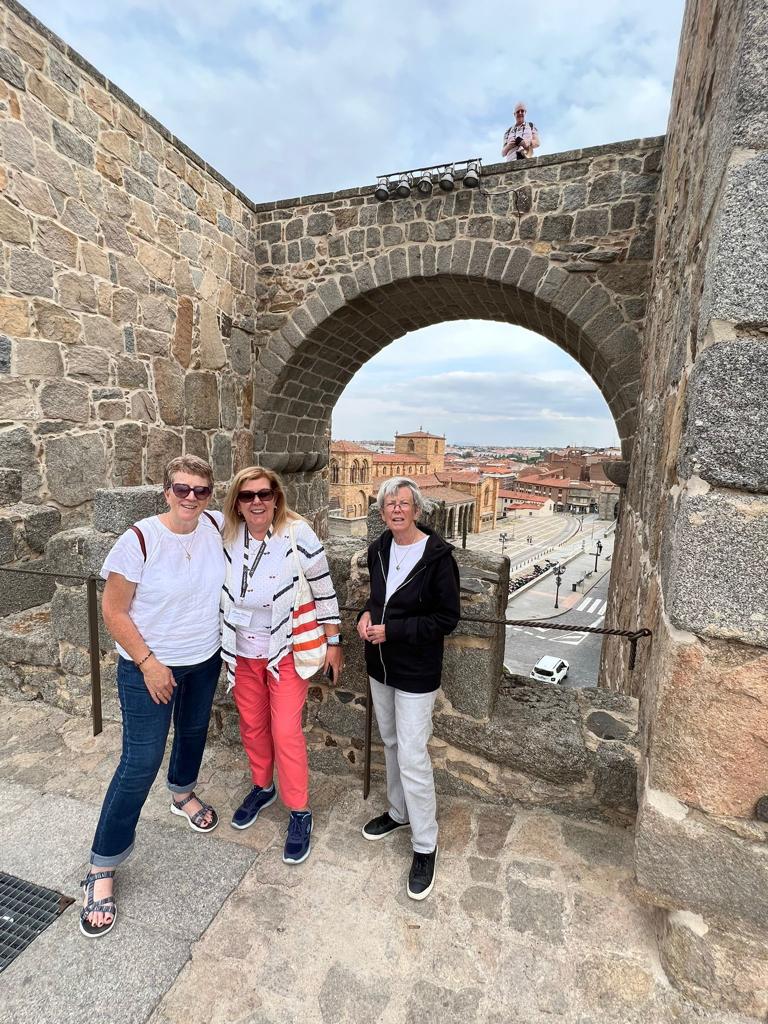
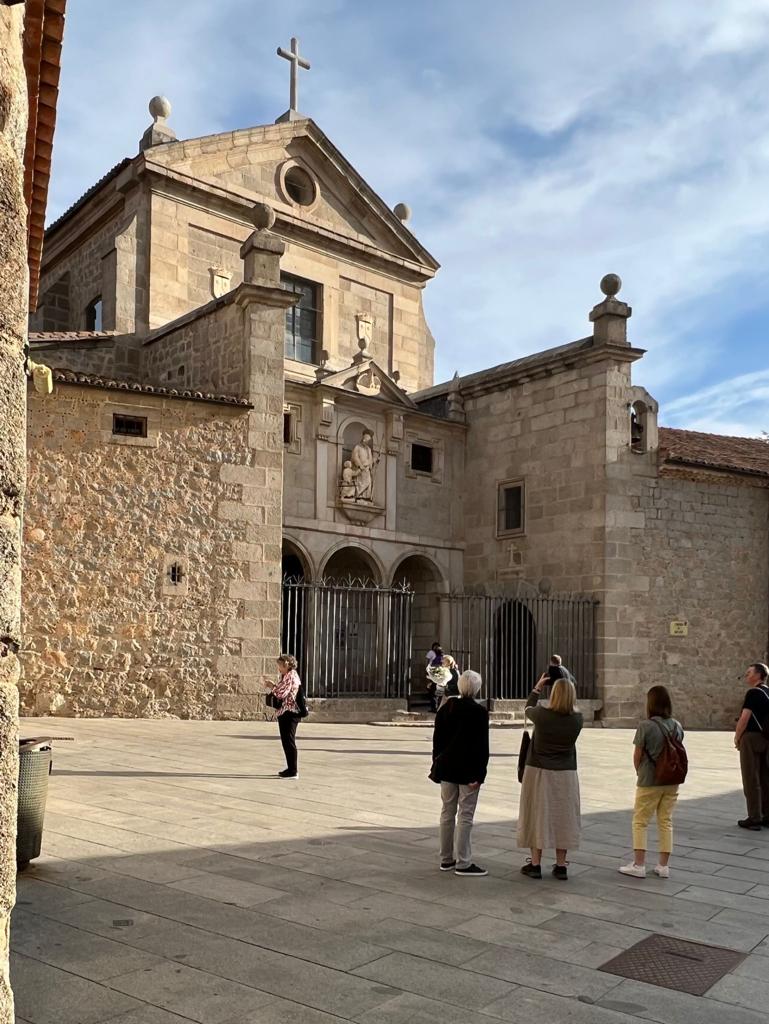
Martha and Tom were able to collect some beautiful flowers sent by Martha’s family that had been delivered to our projected pilgrim accommodation. They brightened up our supper time, and we reflected on how determined our determination had been, as our step counts were off the scale.
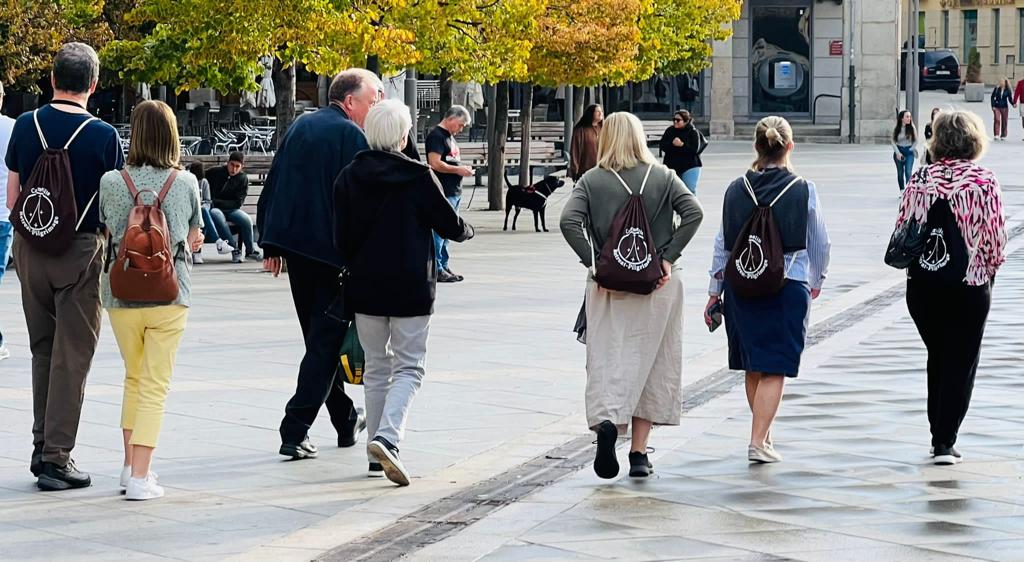
Day Five – ‘Love stronger than death’
The journey to Alba de Tormes was especially poignant as we were retracing Teresa’s last journey as she returned from an exhausting sojourn in Burgos to inaugurate her final foundation. Once again Fr Matt brought history vividly to life. Alba was bustling with activity as the local population, complete with brass band, was preparing for the central event, the procession of the statue into the main church where Teresa is buried.
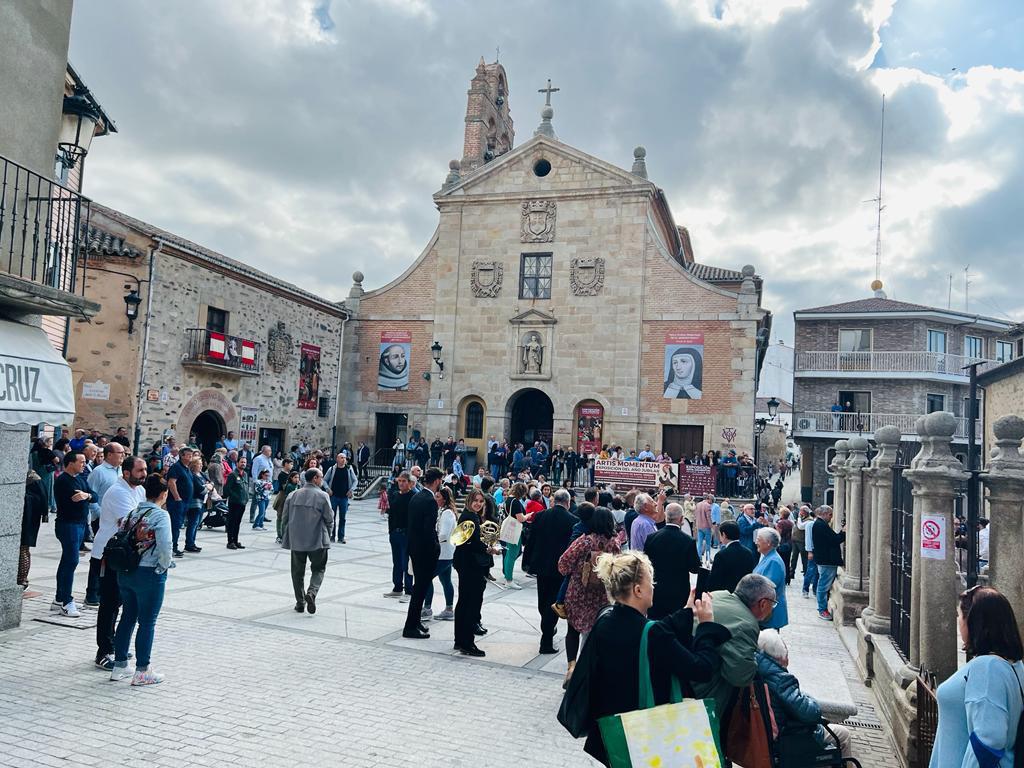
Meanwhile we celebrated mass in the side chapel where Teresa had originally been interred. Fr Kelvin led us to meditate on writing the diaries of our own lives, perhaps catching Teresa’s own sense of urgency. We then had time in the sumptuous museum, crammed full of artefacts beautifully displayed. One remarkable find was a banner that accompanied a delegation of pilgrims to the church from Kensington in 1882. It did not look out of place alongside the beautiful banner that went to Rome in 1622. It was memorable to spend time in the gallery behind the high altar, very close to Teresa’s casket, with a great view of events below.
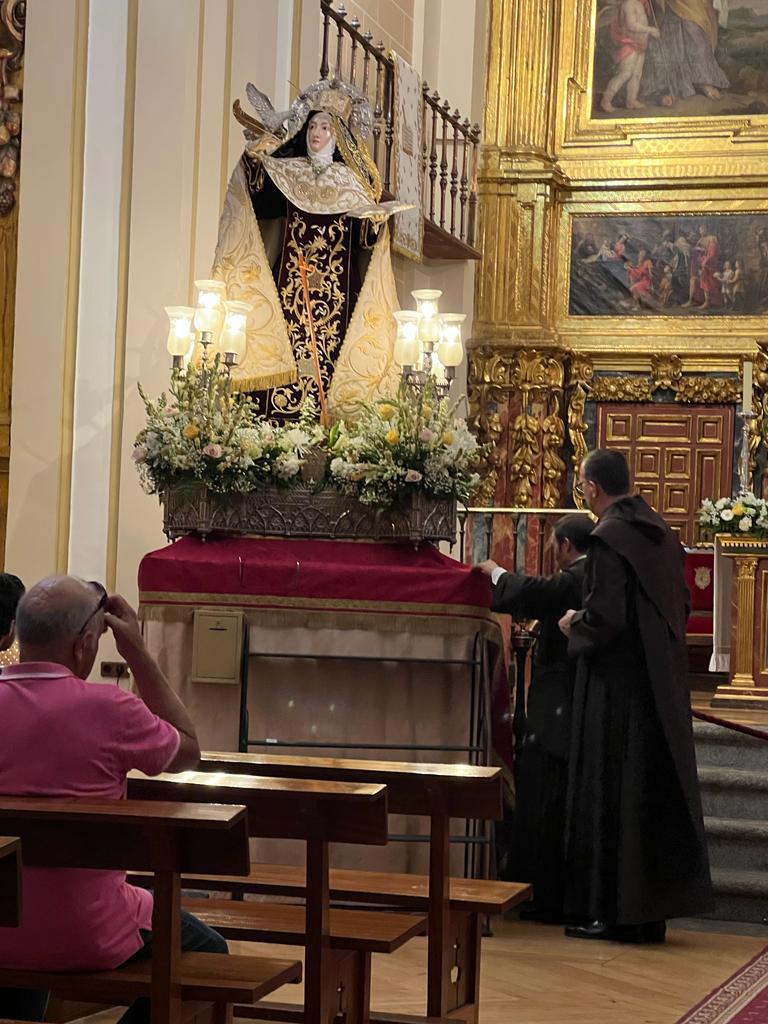
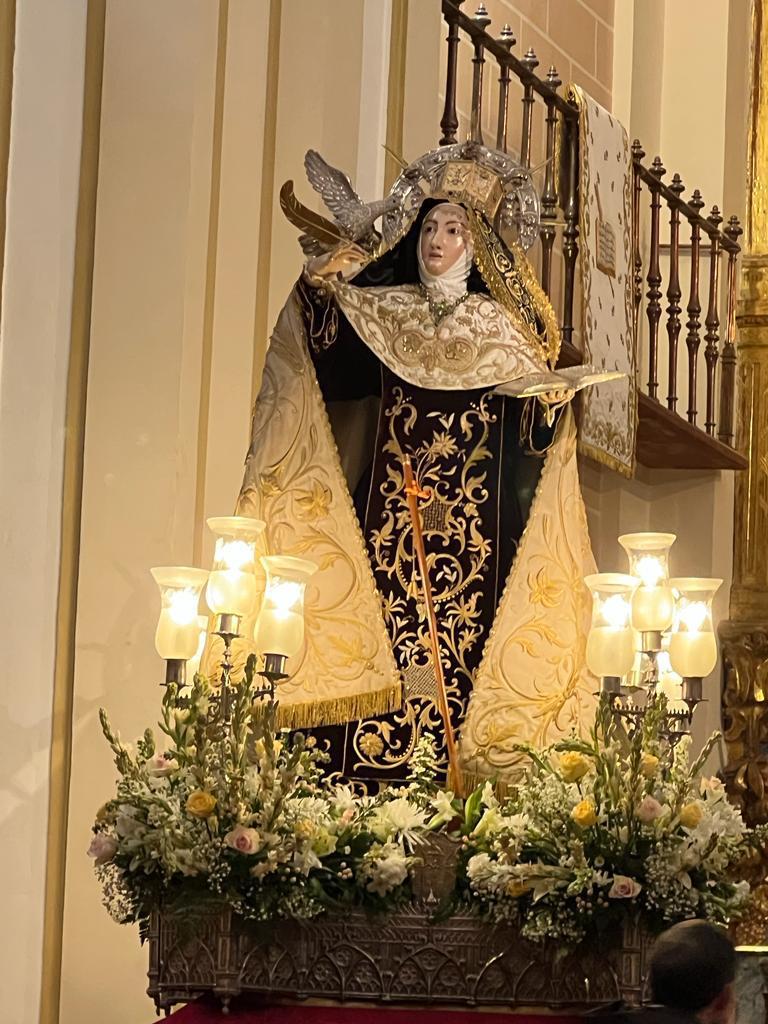
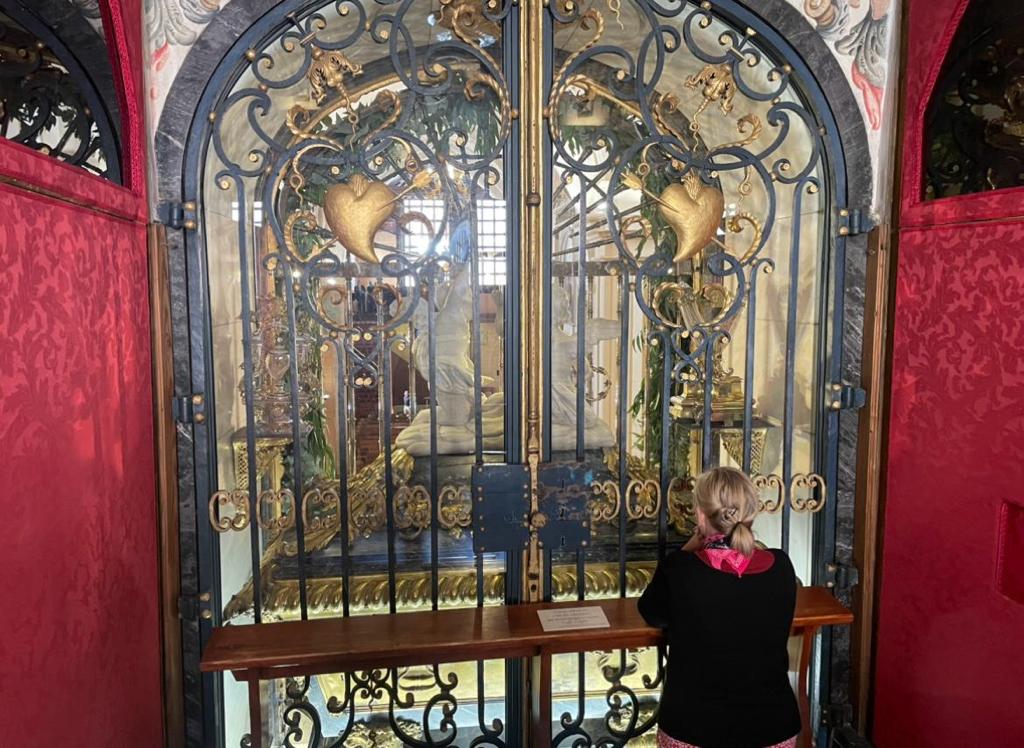
Our groups foraged for lunch in many places, and enjoyed the fiesta going on, which included a costumed chasing game for the children.
On our way home Fr Kelvin kindly arranged a pause outside Avila at the Four Columns where 7 year old Teresa and her brother Rodrigo were intercepted before they could realise their ambition of being martyred by the Moors. We would have voted on which of our pilgrims to send as martyrs but frankly the competition was so intense there would have been too few pilgrims to continue.
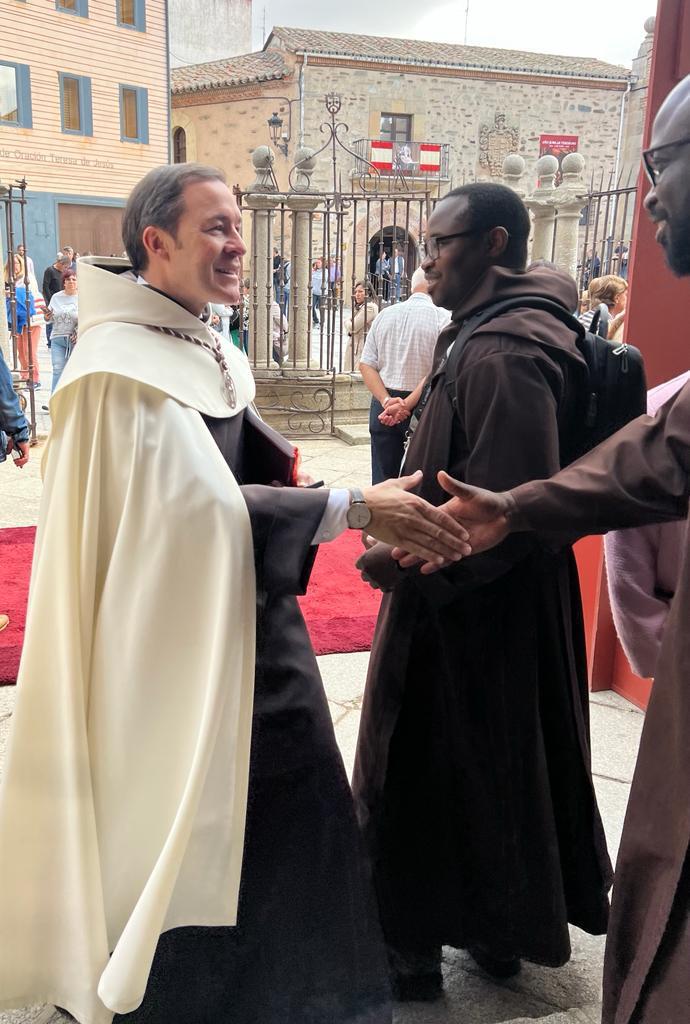
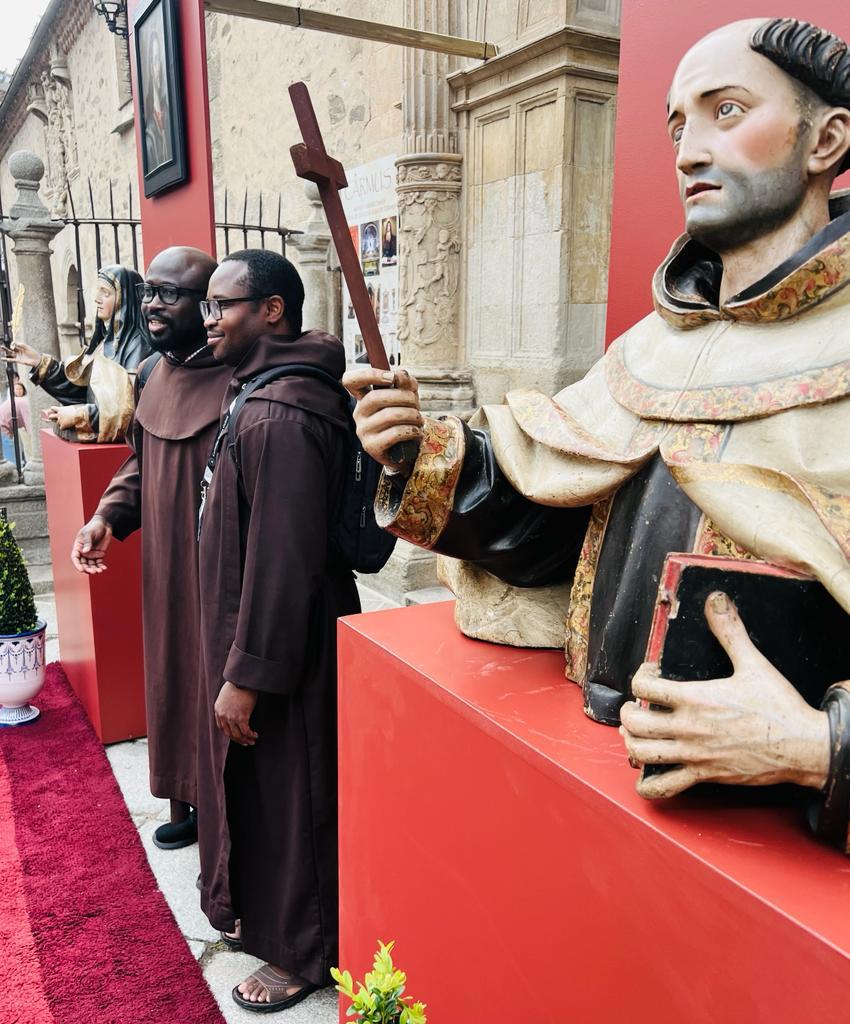
Back at base camp our endlessly surprising evening menu included cold custard with crushed sugary biscuits. Be warned, Sion Community, Karen is lining you up for an experience you are going to remember.
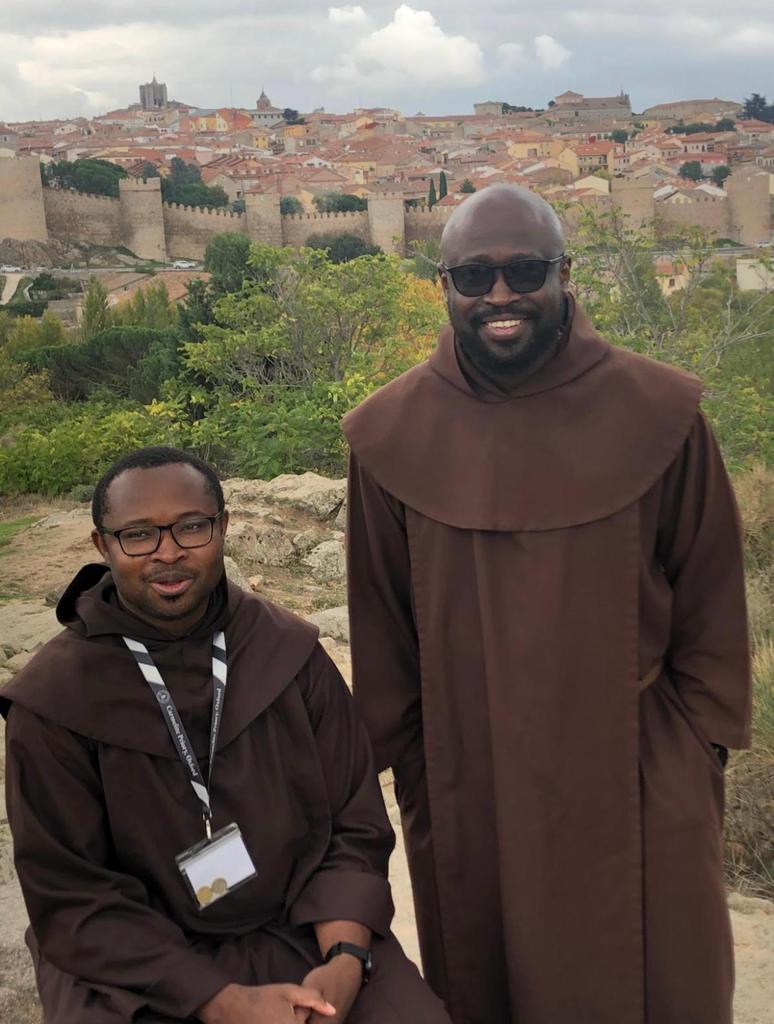
Day Six- Let me be as Christ to you
(Solemnity of St Teresa- Graduation day)
Graduation day for the five from the spiritual direction course, dawned with sunshine, and we began with a lovely visit to the Community of the Incarnation outside Avila’s walls. The cradle of Teresa’s vocation as a 21 year old, and scene of many dramatic moments she later wrote about: her transverberation with the angel’s arrow; her encounter with the Christ child on the stairs, and her surprising personal gift from Jesus of a nail from his passion at her reception of holy communion.
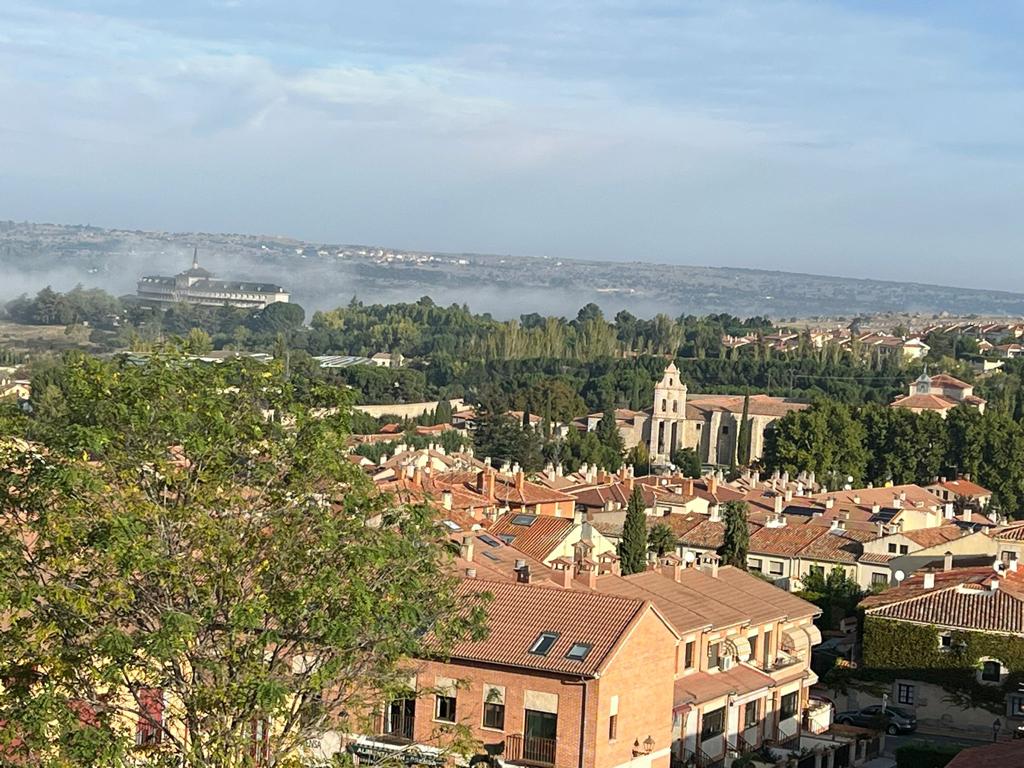
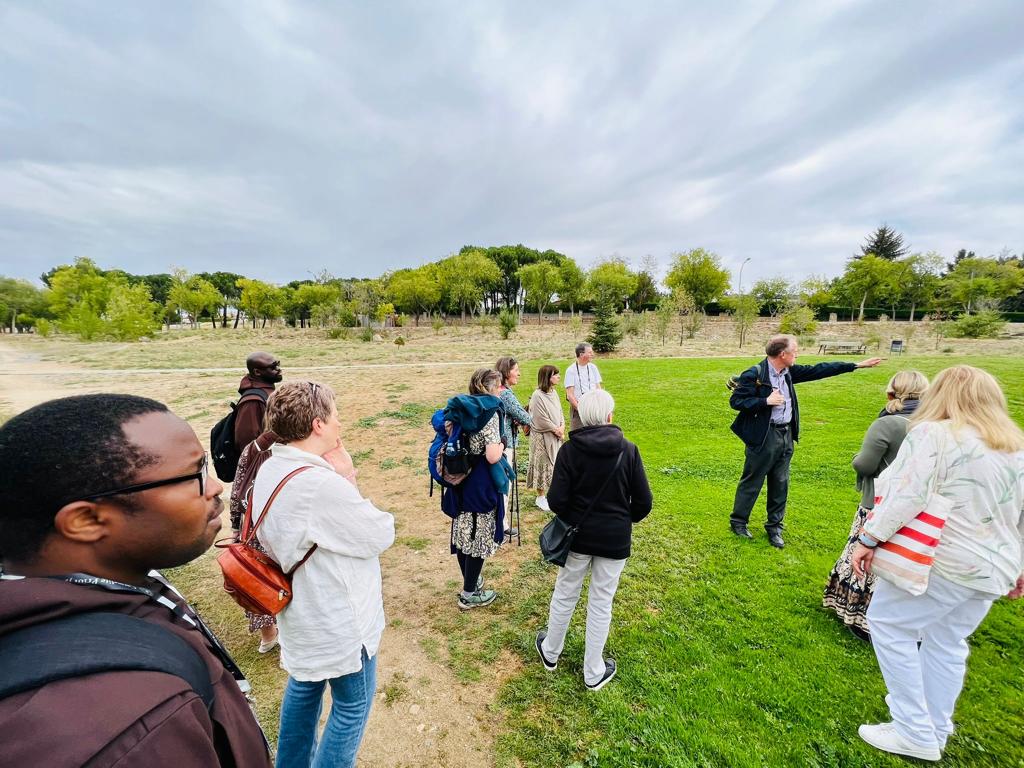
Our walk retraced much of St John’s regular commute to his ‘work’ at the monastery from his friary. It was a surprise to learn that this community only voted to join Teresa’s discalced reform in the 1940s. The monastery museum had a powerful collection of artefacts and relics, including St John’s original drawing of the crucifixion, and the seminal painting of the Woman at the Well, which had been in Teresa’s childhood home and profoundly influenced and enriched her spirituality.
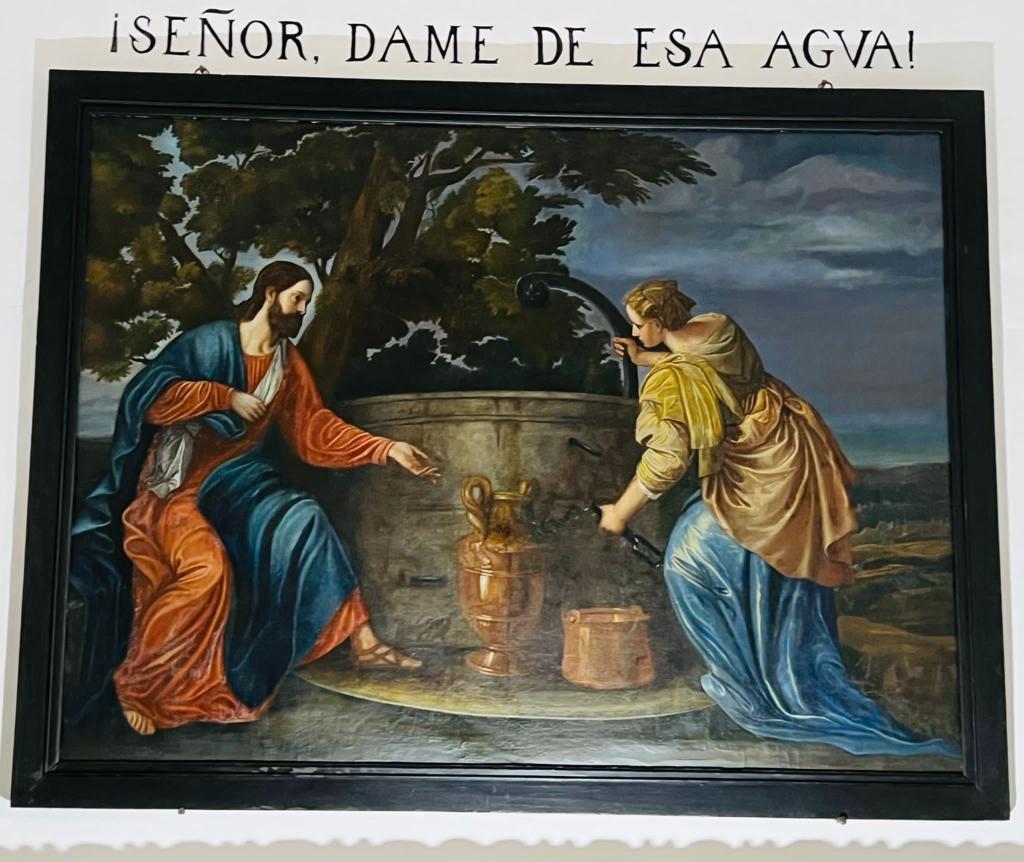
We made our way through the ancient Jewish cemetery for a special Sunday mass in Spanish for St Teresa’s feast day, complete with flamenco singer, at the very imaginatively designed, star-shaped University of Carmelite Studies (CITES). A delicious buffet lunch with many options was followed by a fascinating tour, guiding us through the three levels, the chapels and the gardens, as well as lecture theatres and meeting rooms.
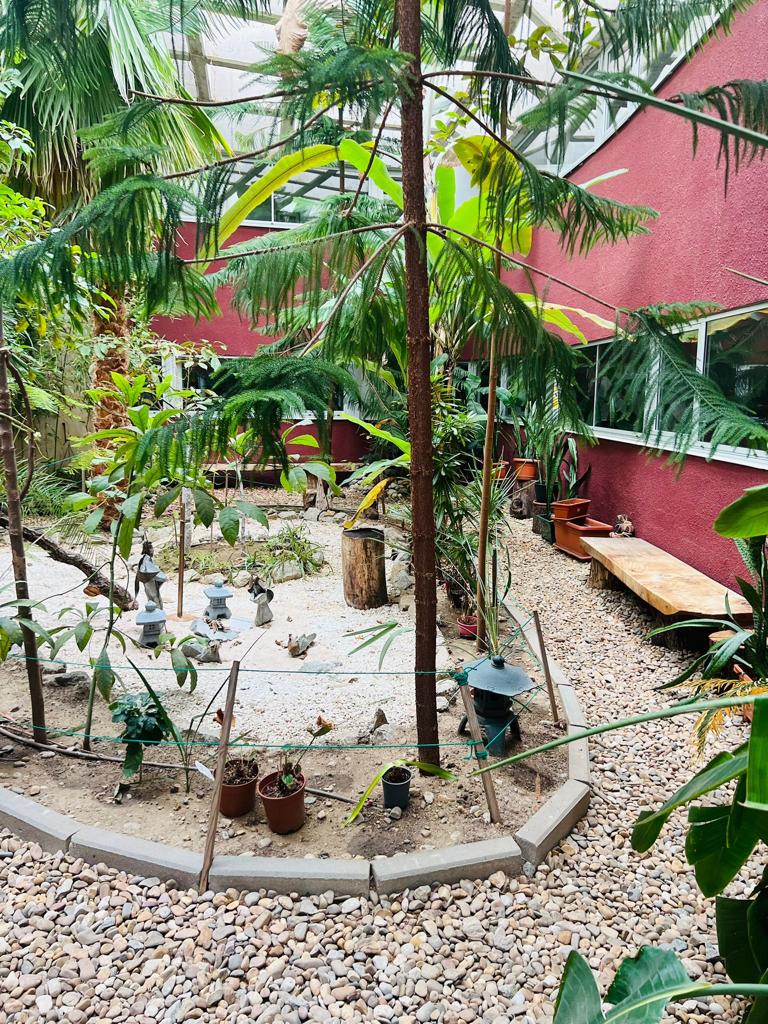
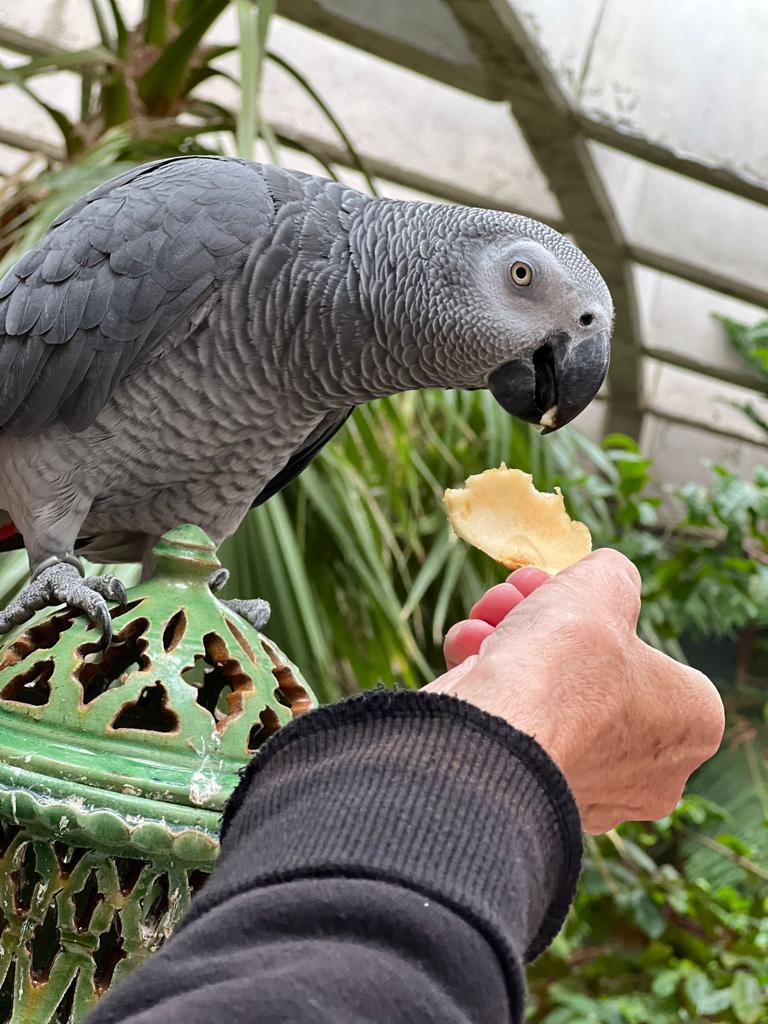
Our graduation ceremony took place in a circular chapel with wall seating and a beautiful central tabernacle donated by some German nuns. We had a ceremony of light, some powerful Scripture and a valedictory address before the award of some fetching certificates, marking the conclusion of a lengthy journey. It was just sad to be without the remaining 18 students in the UK and USA who will graduate online this week.
